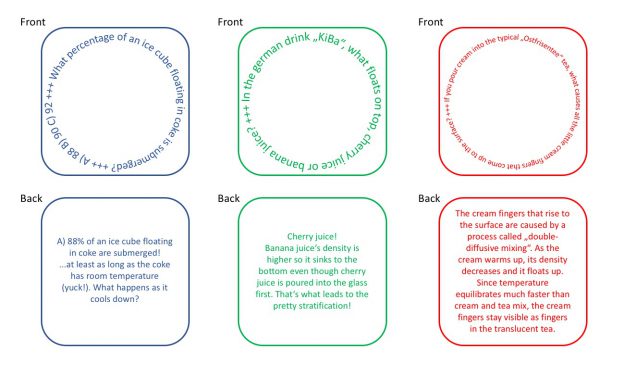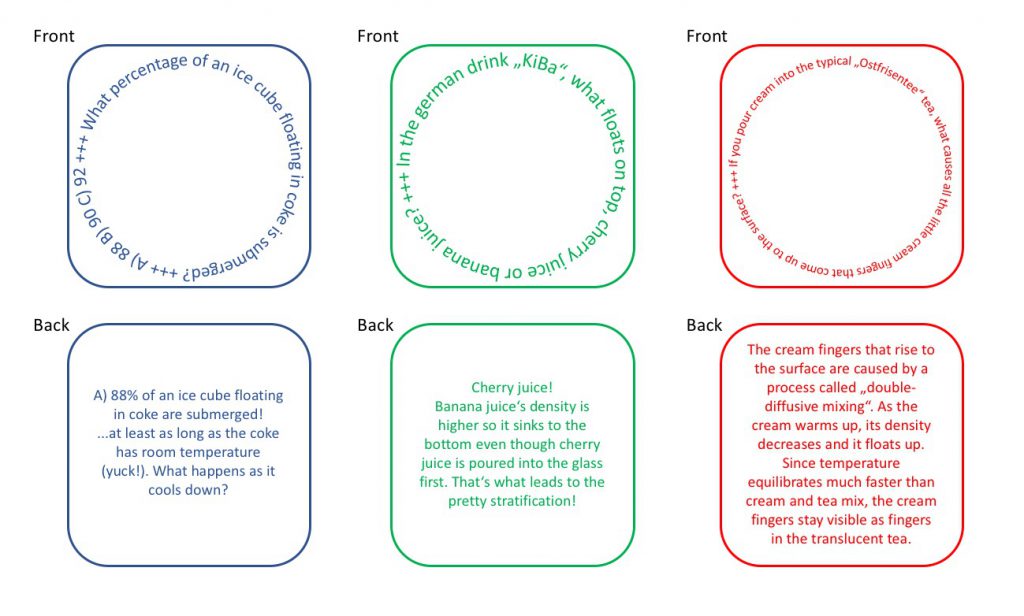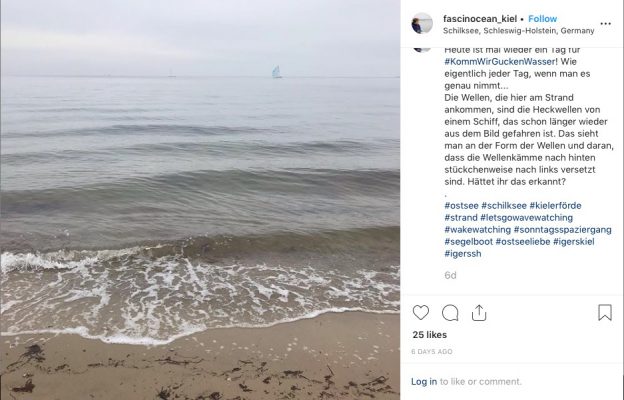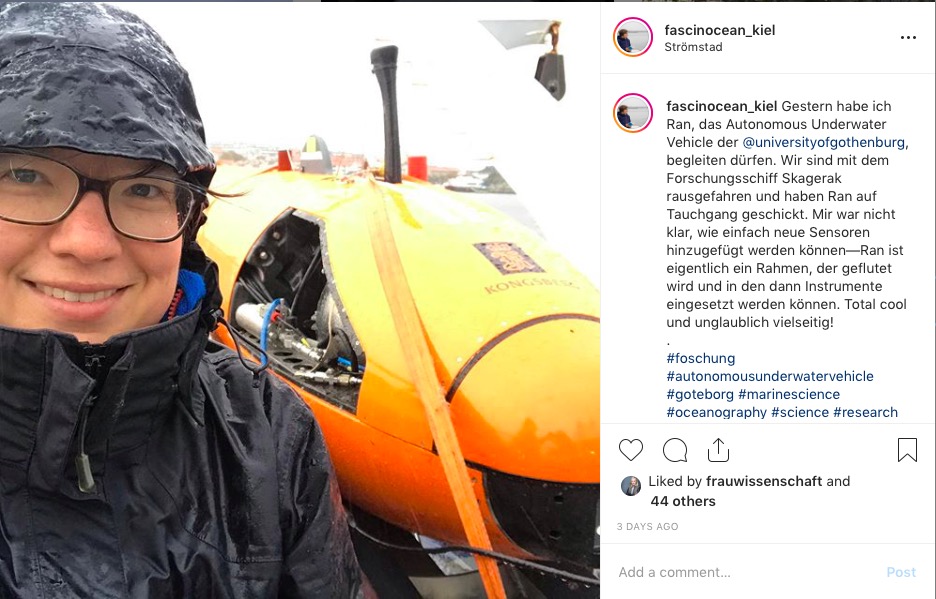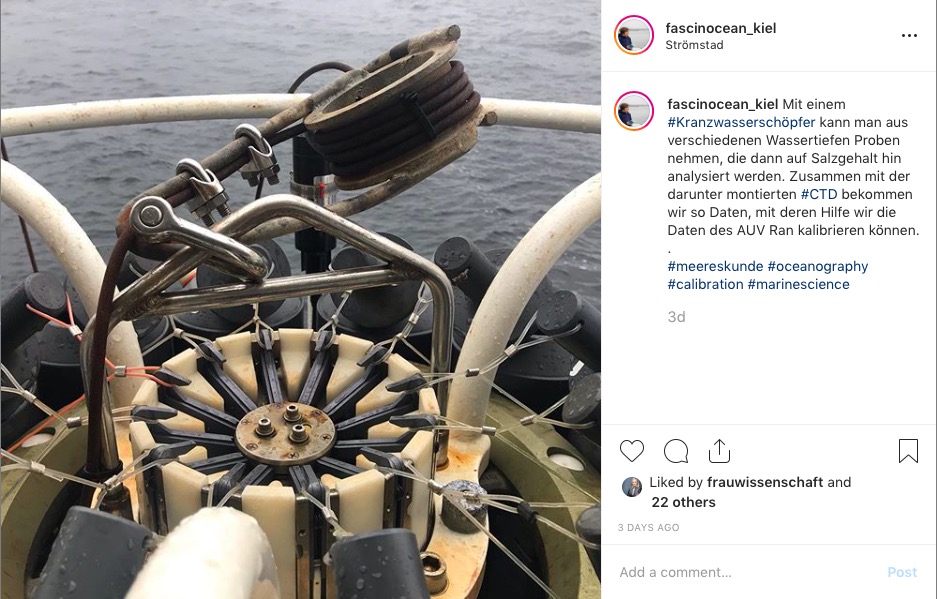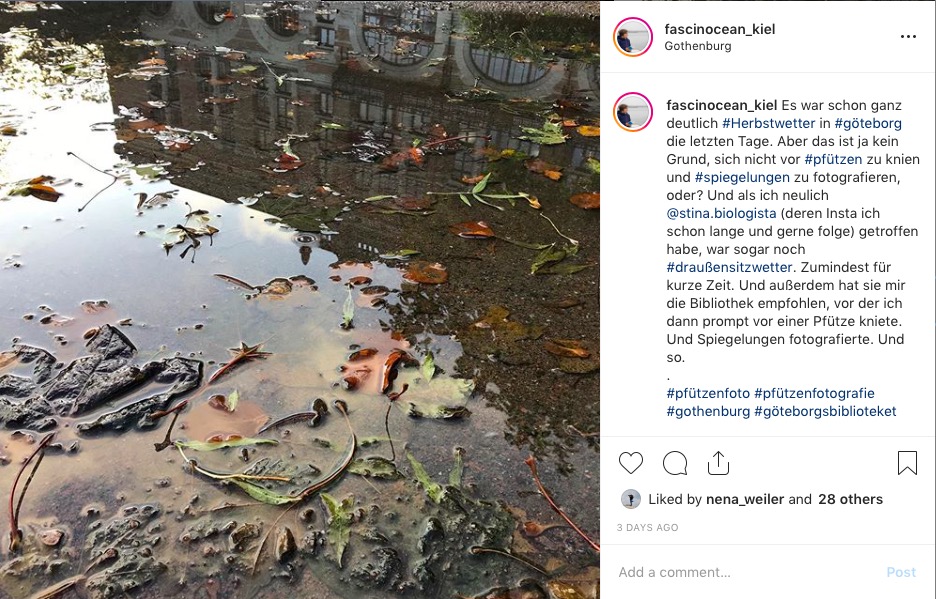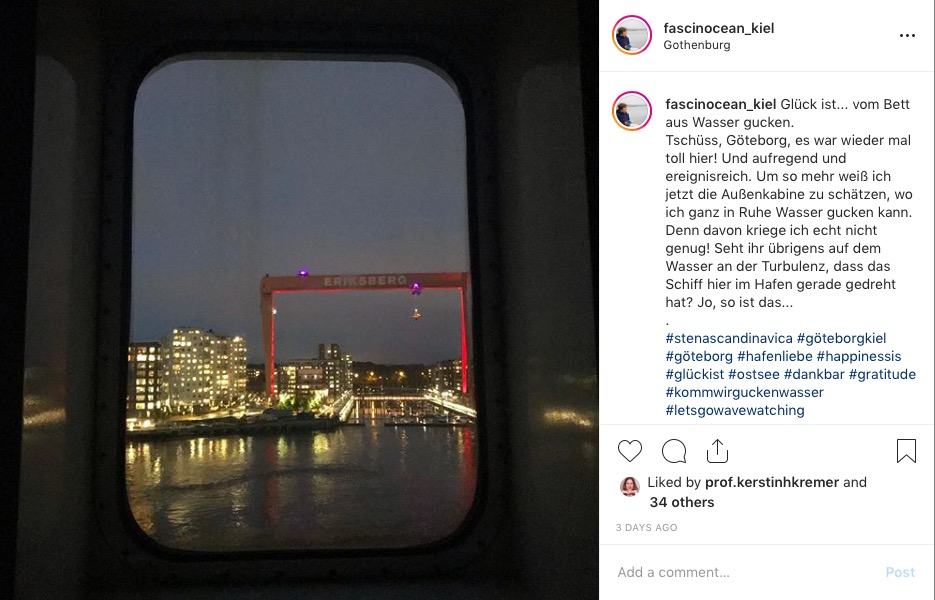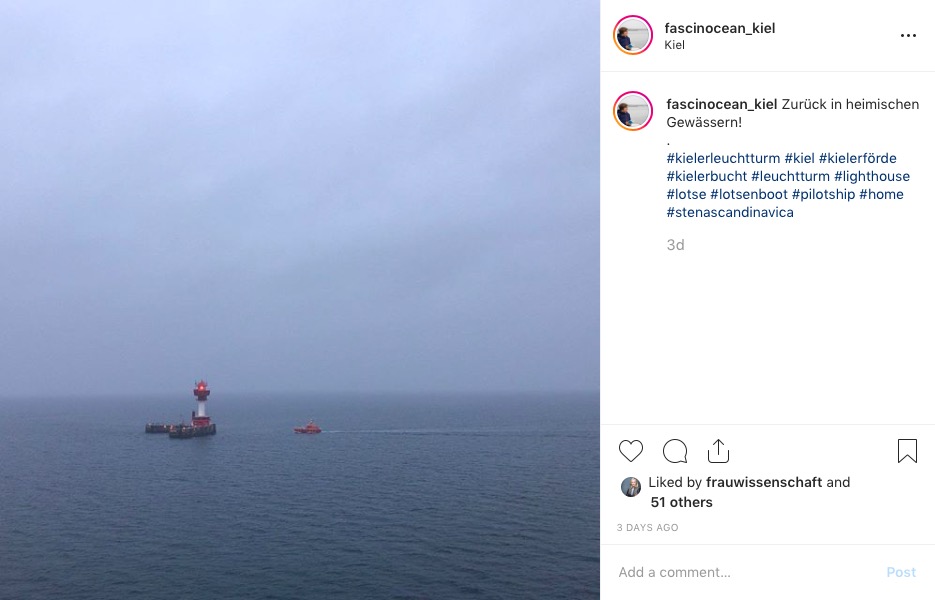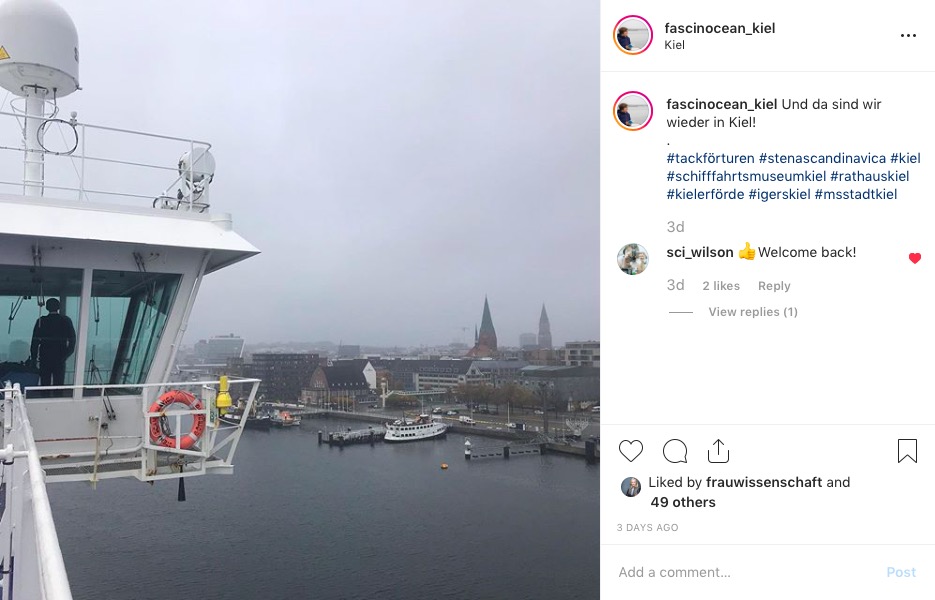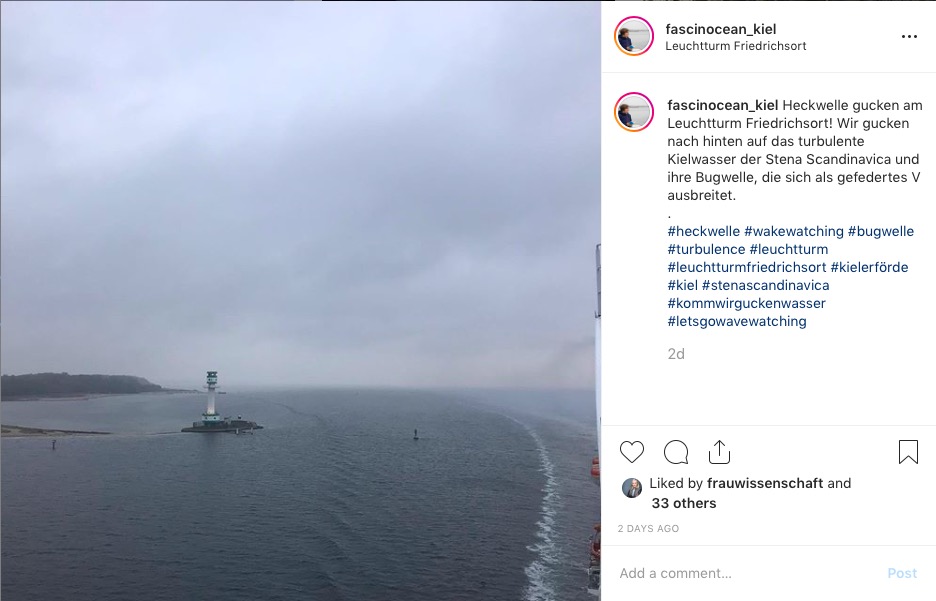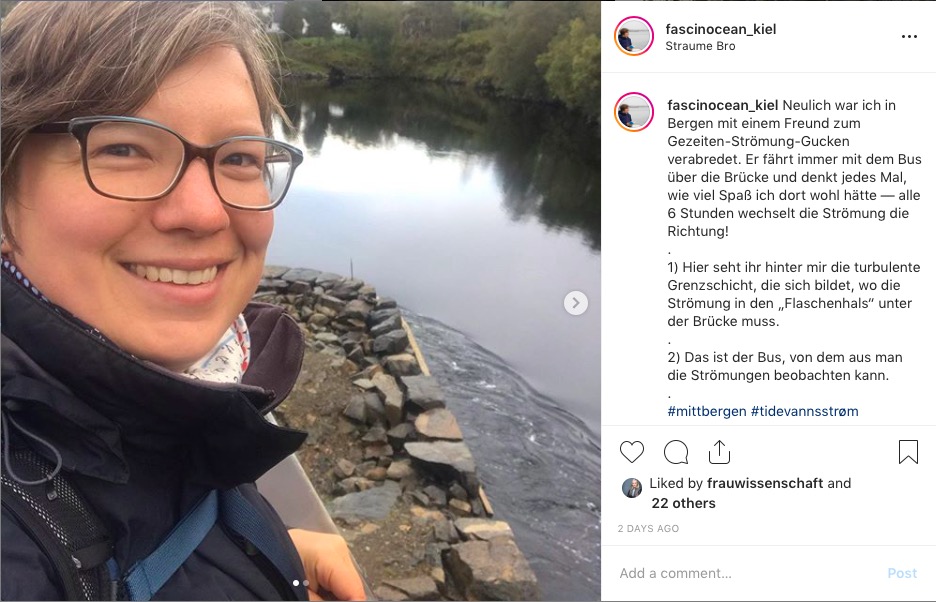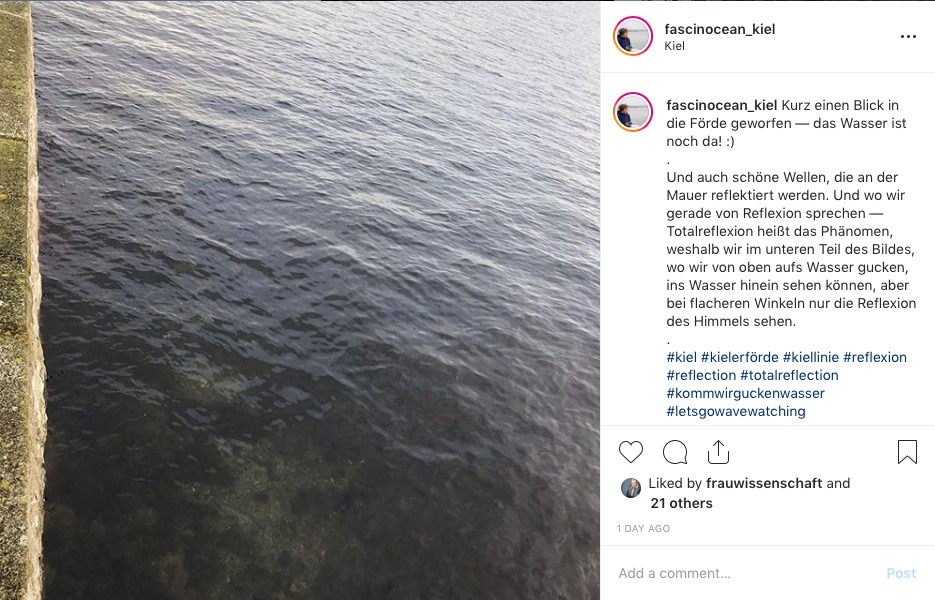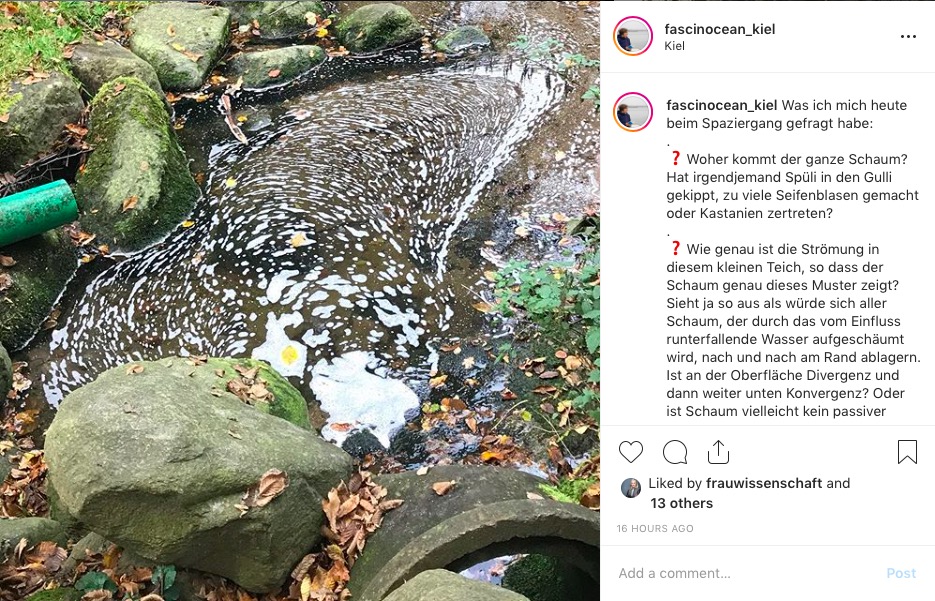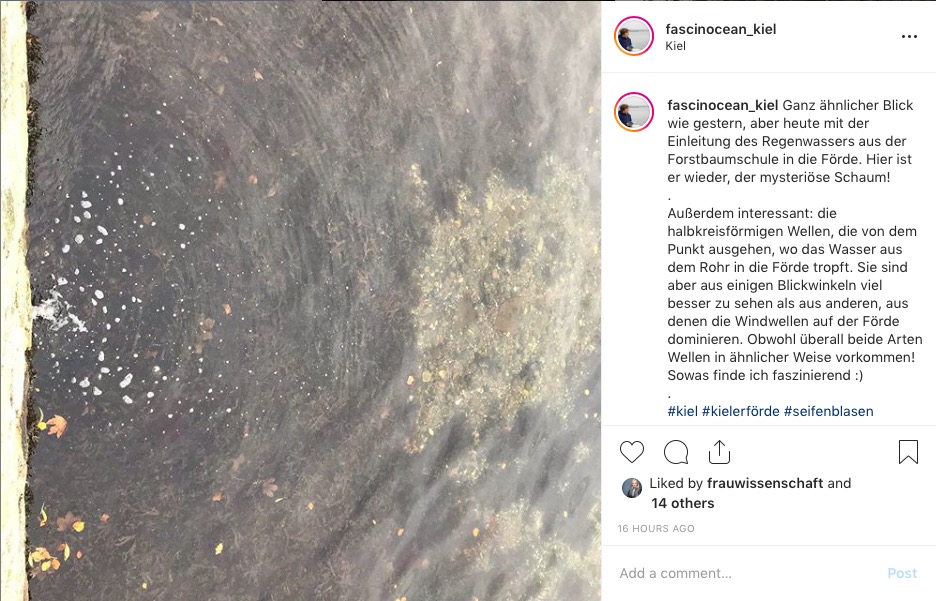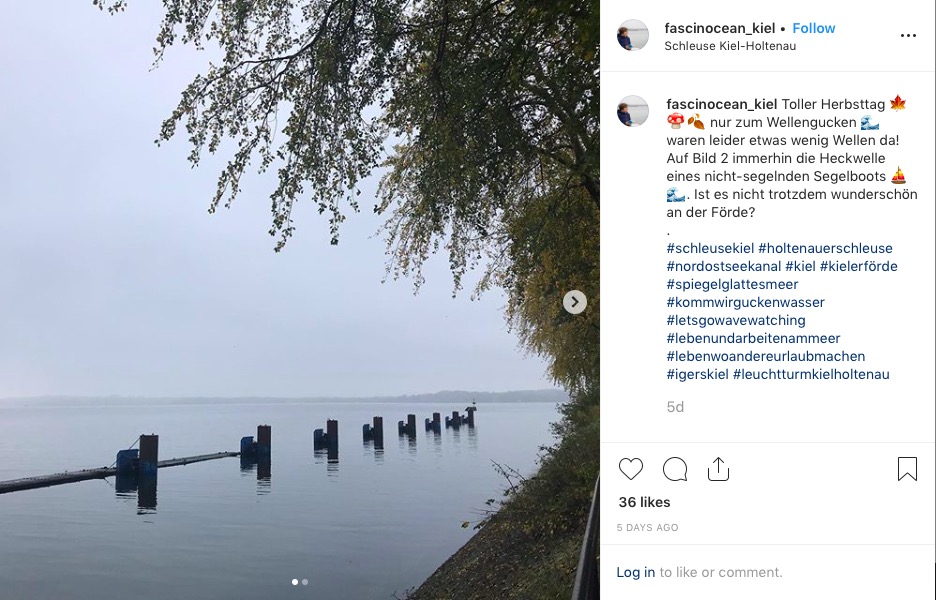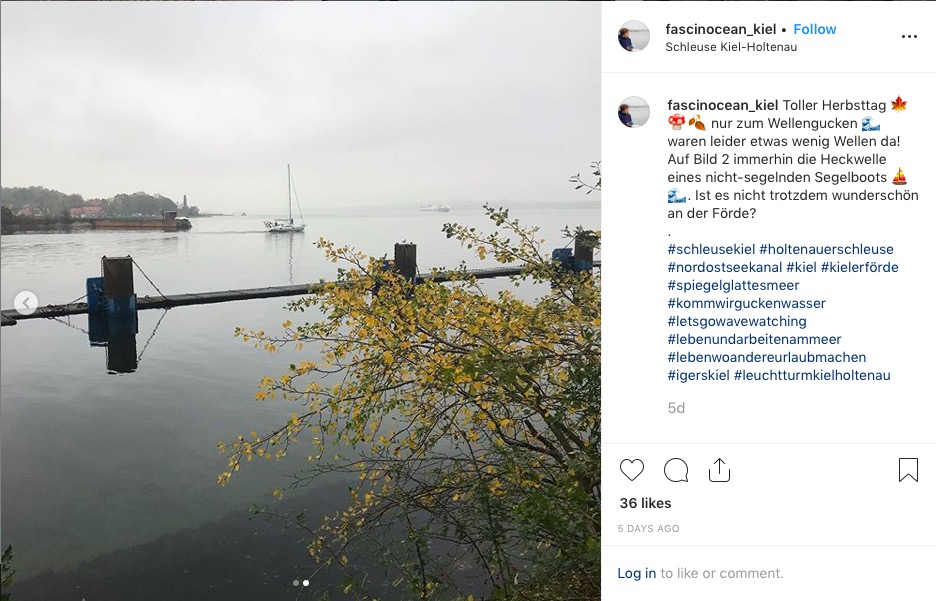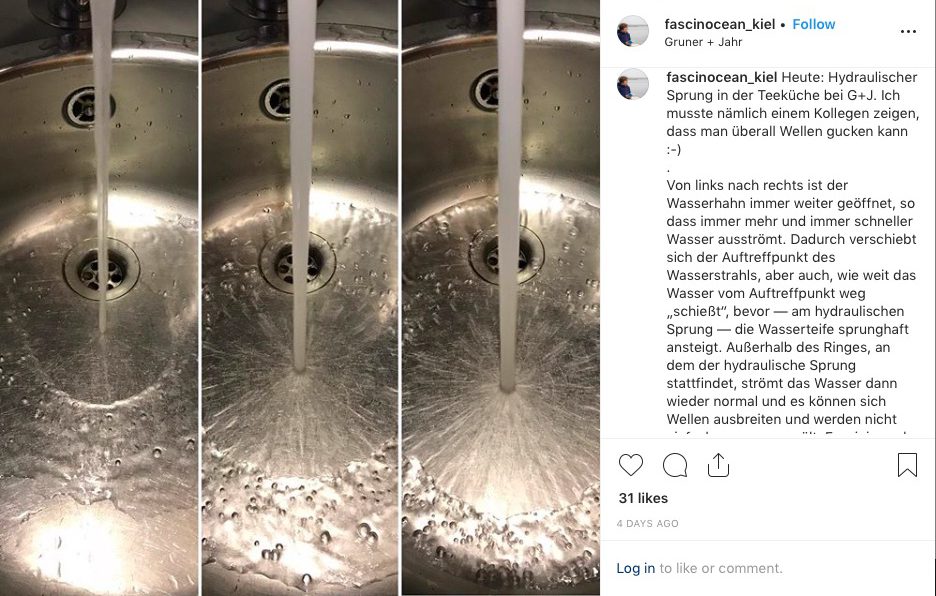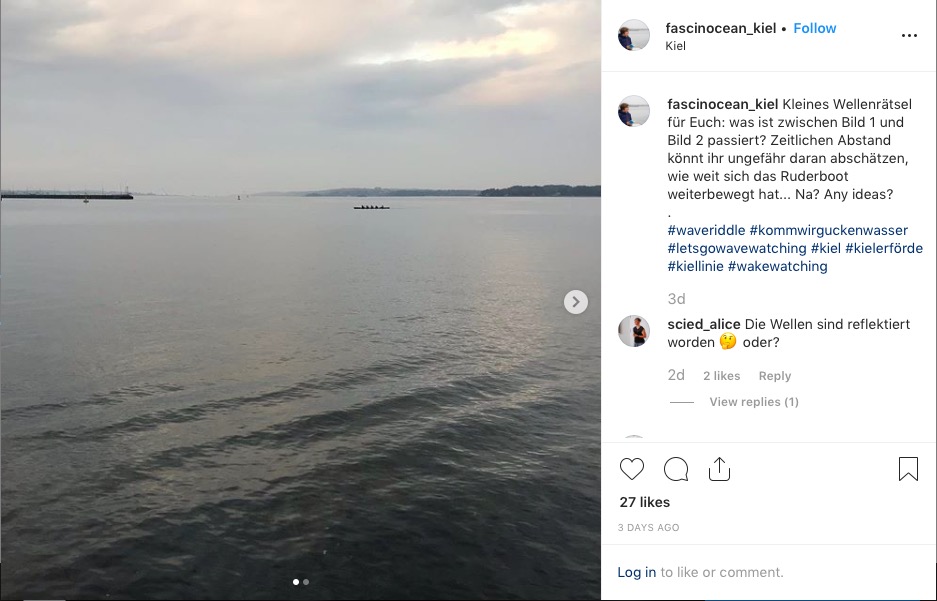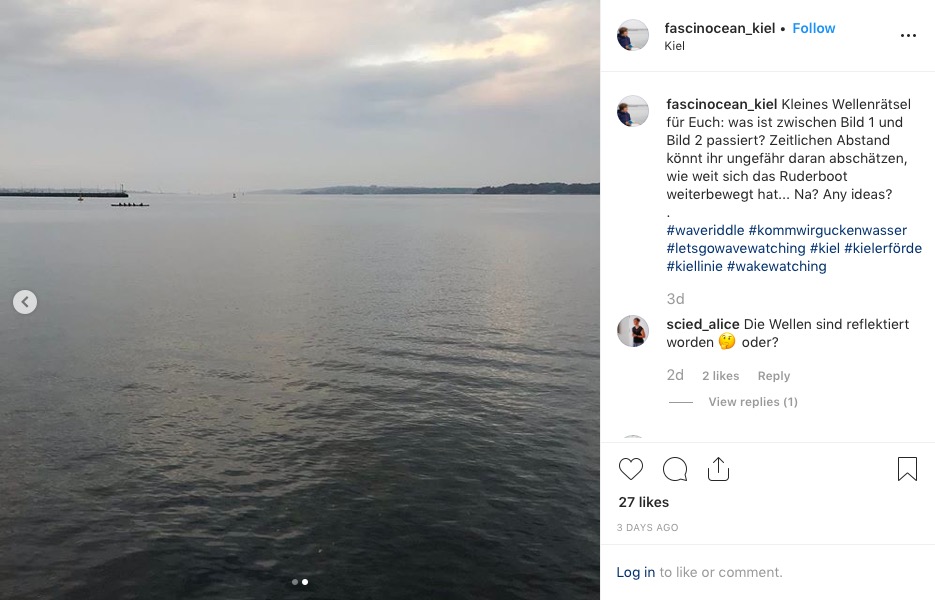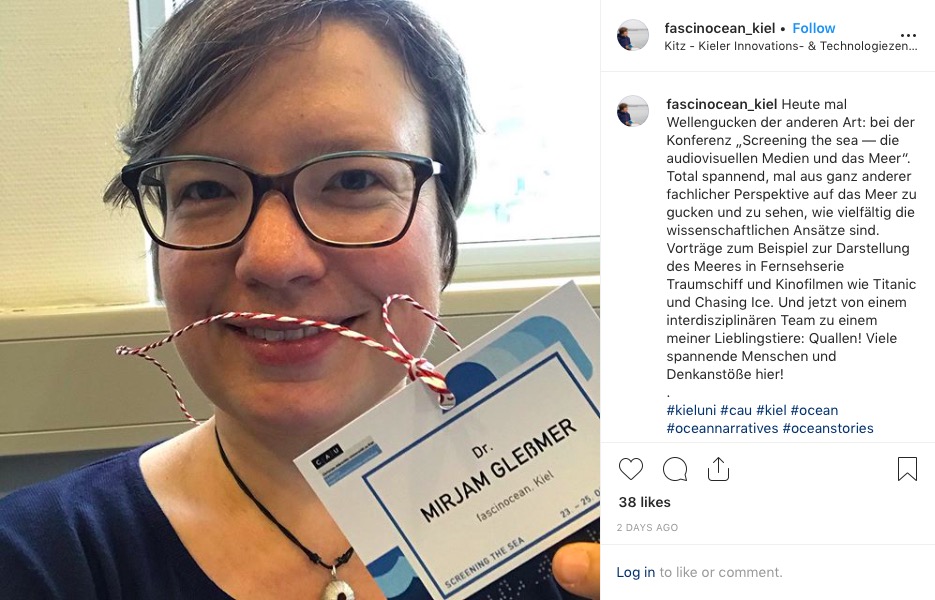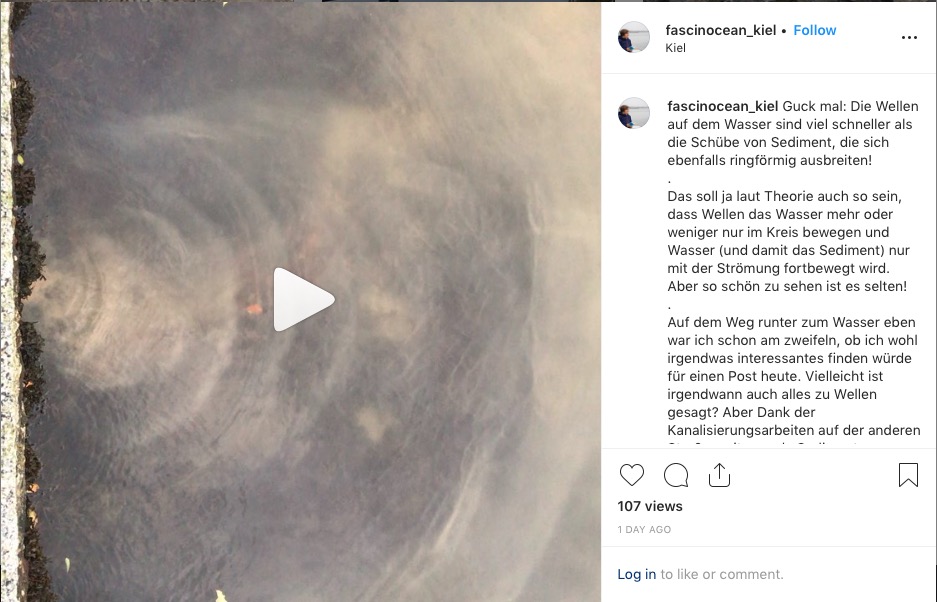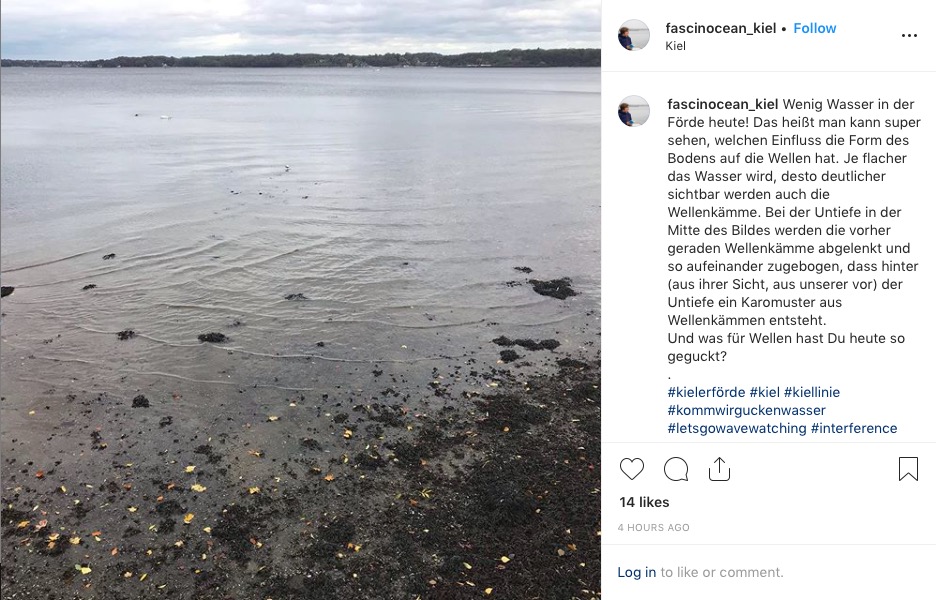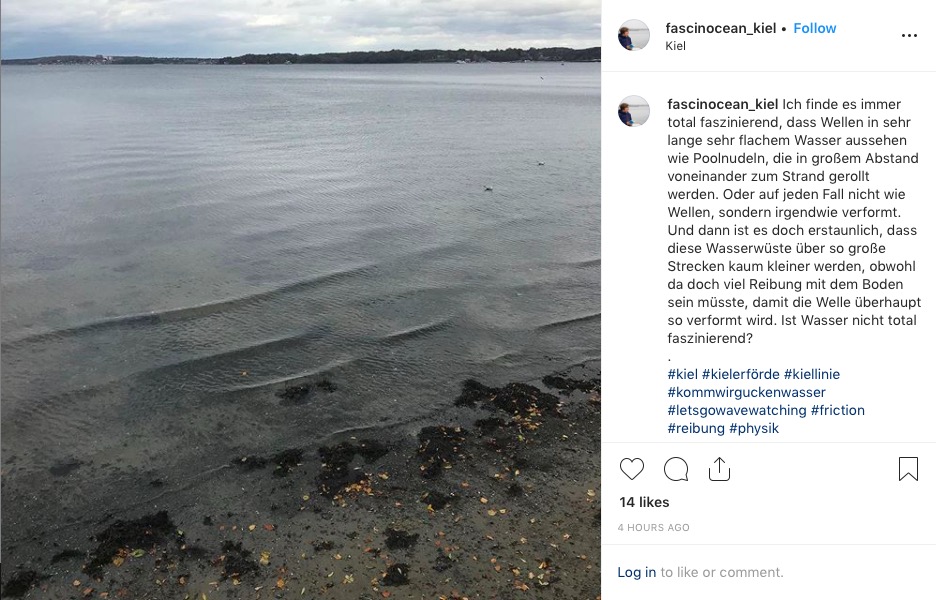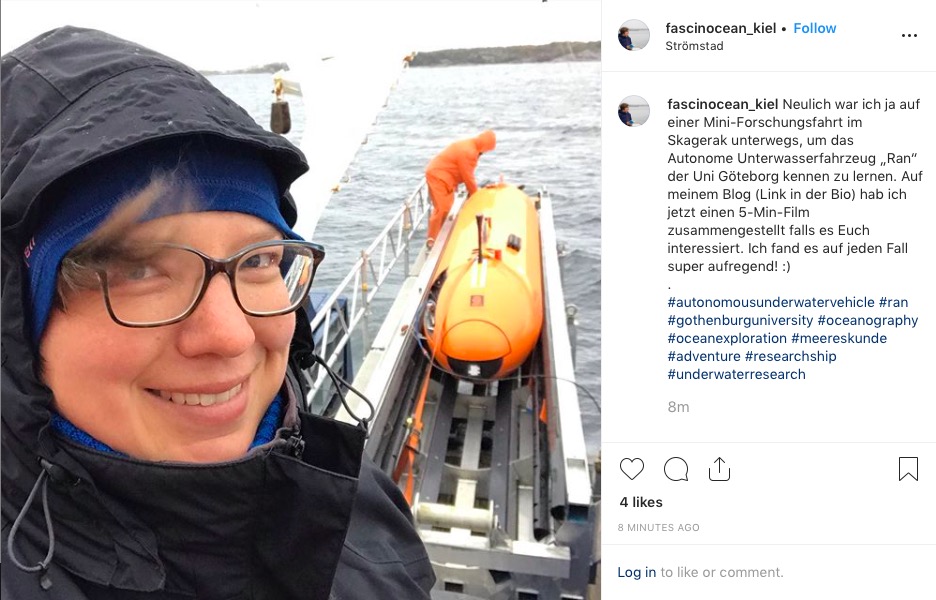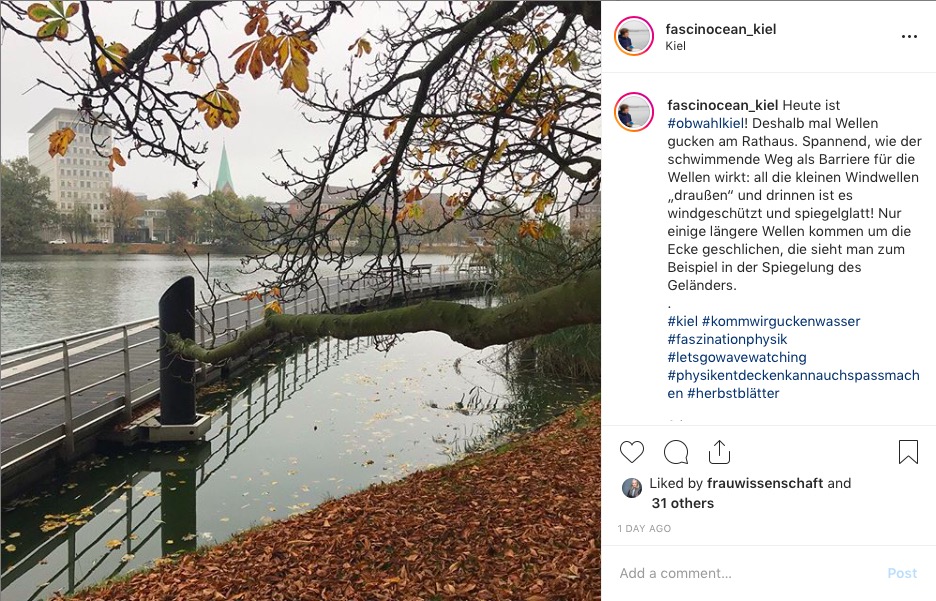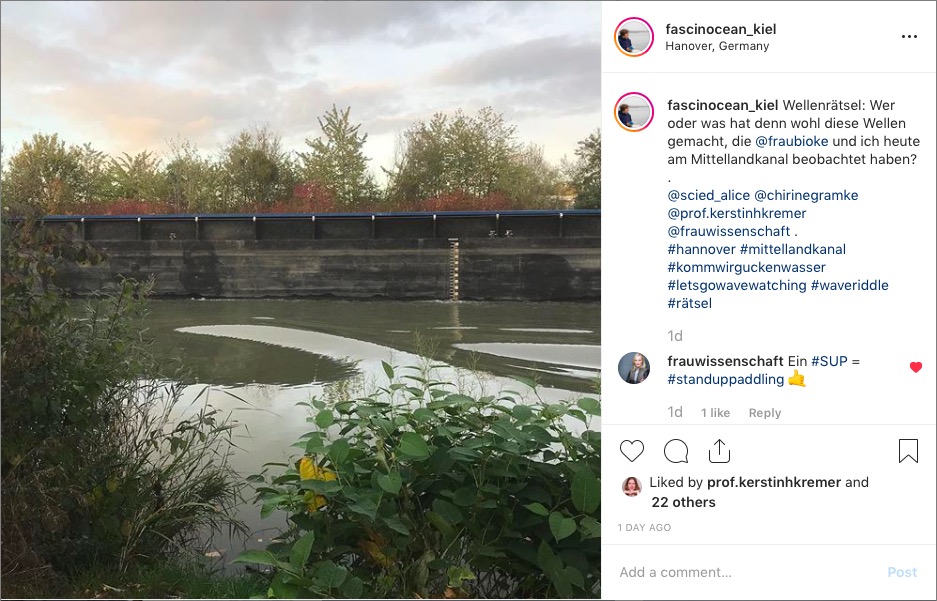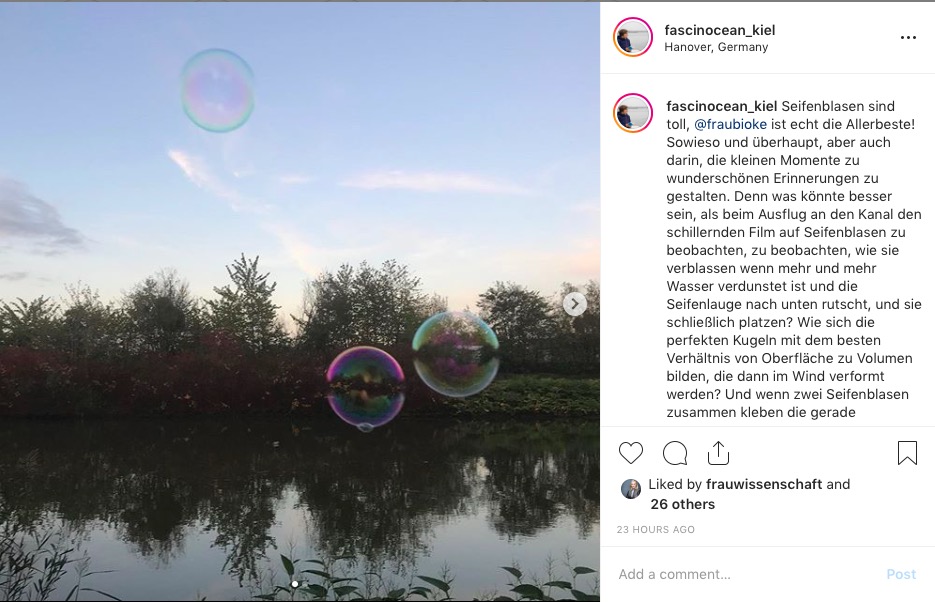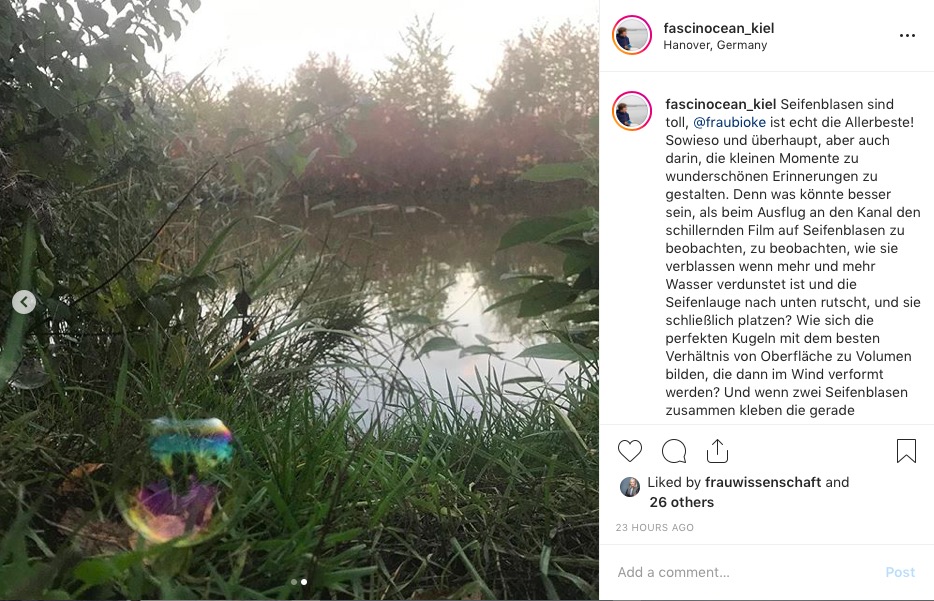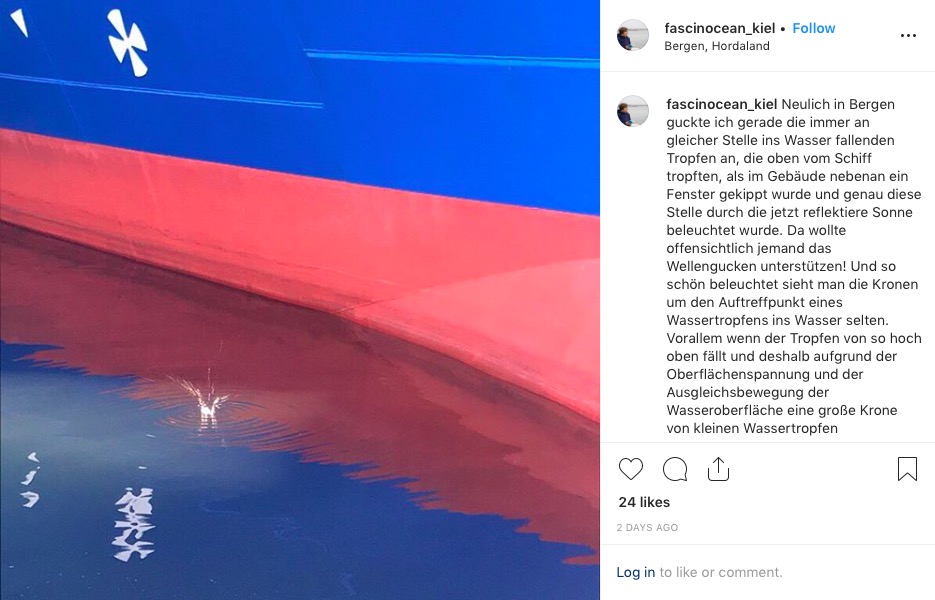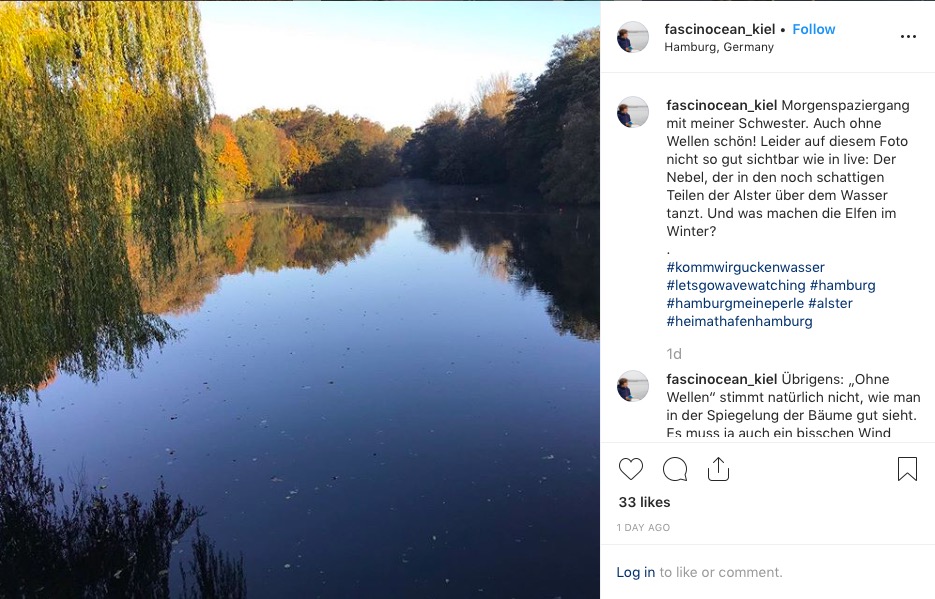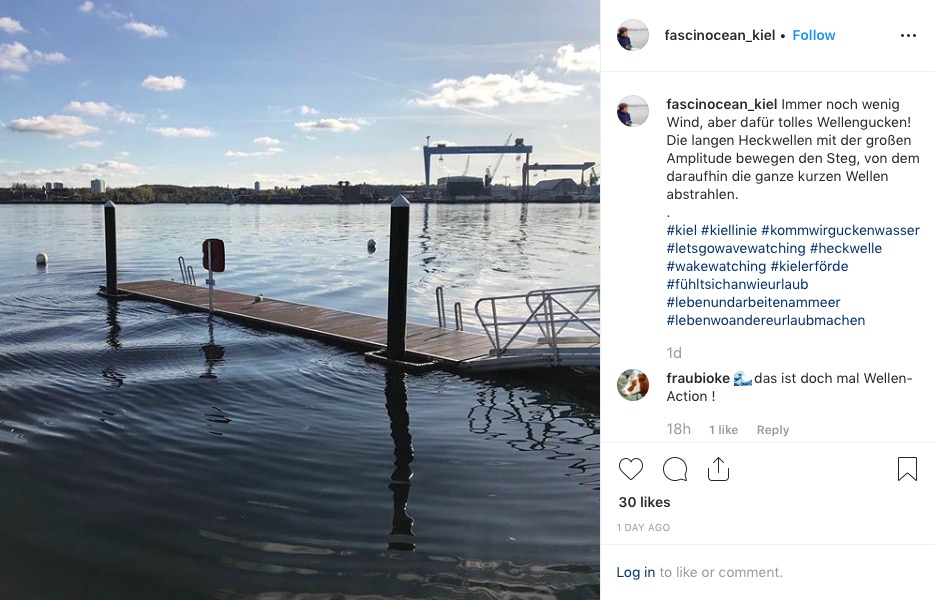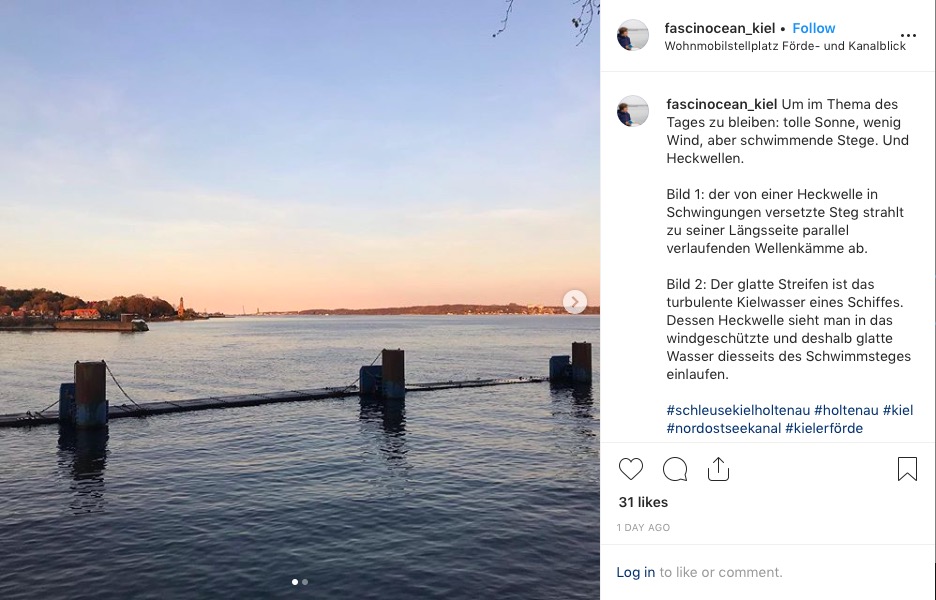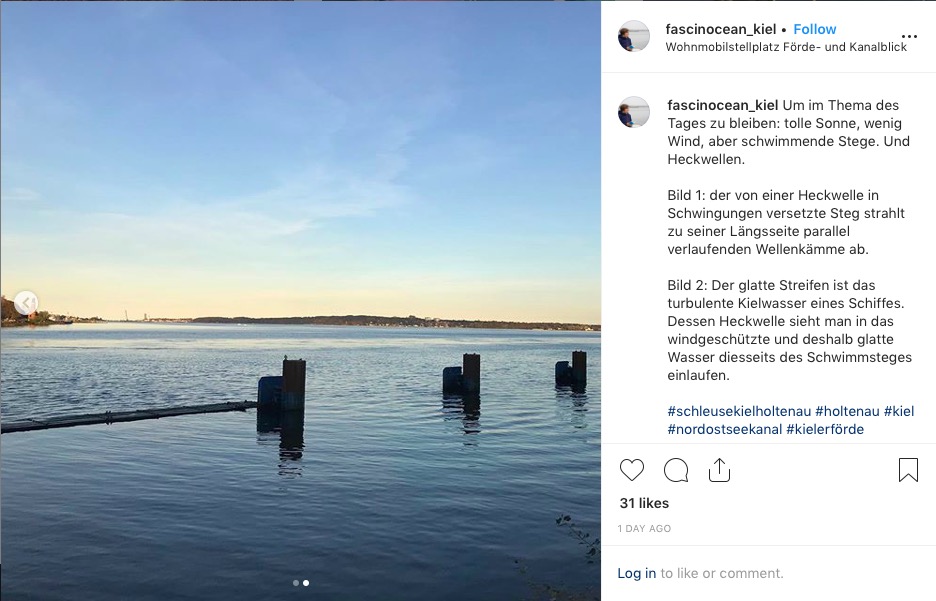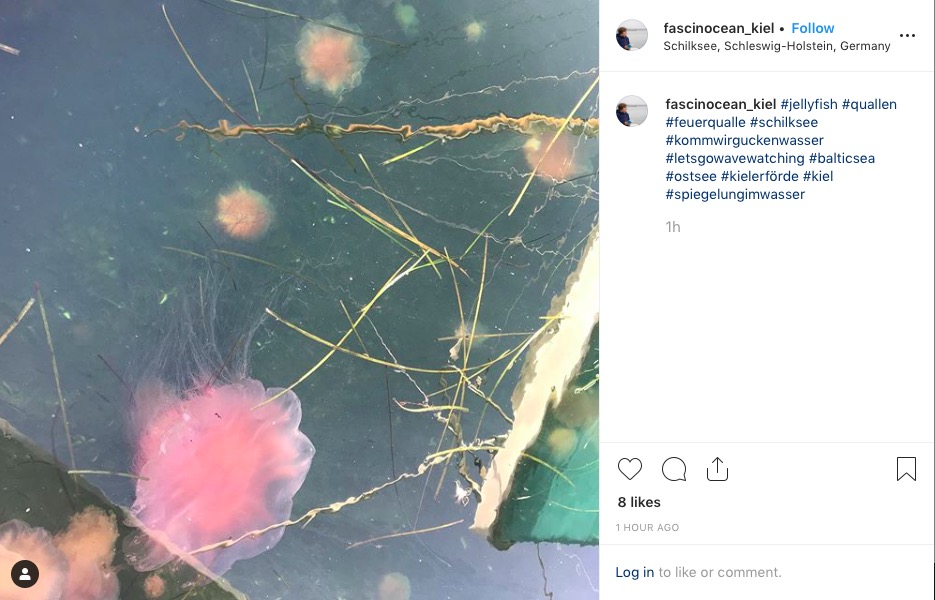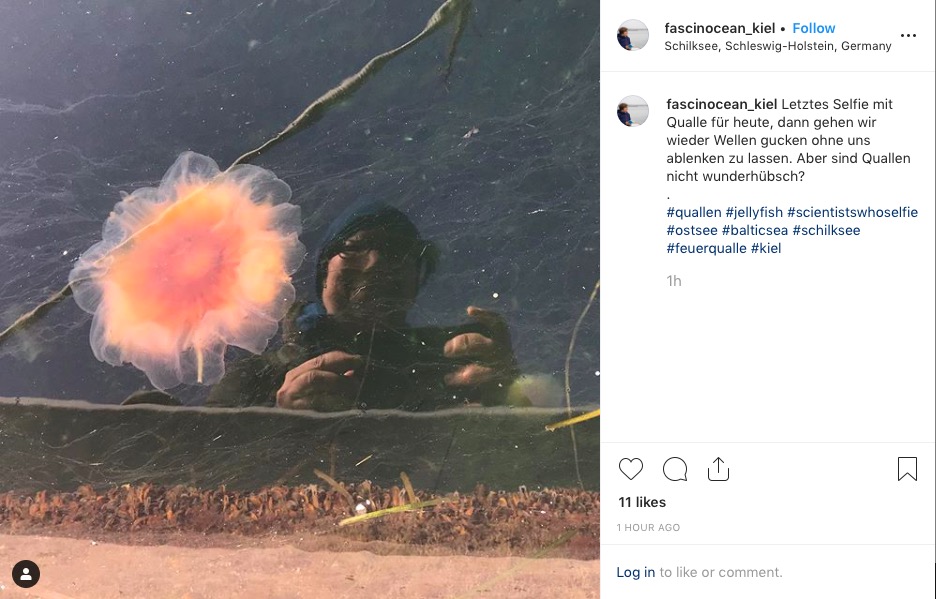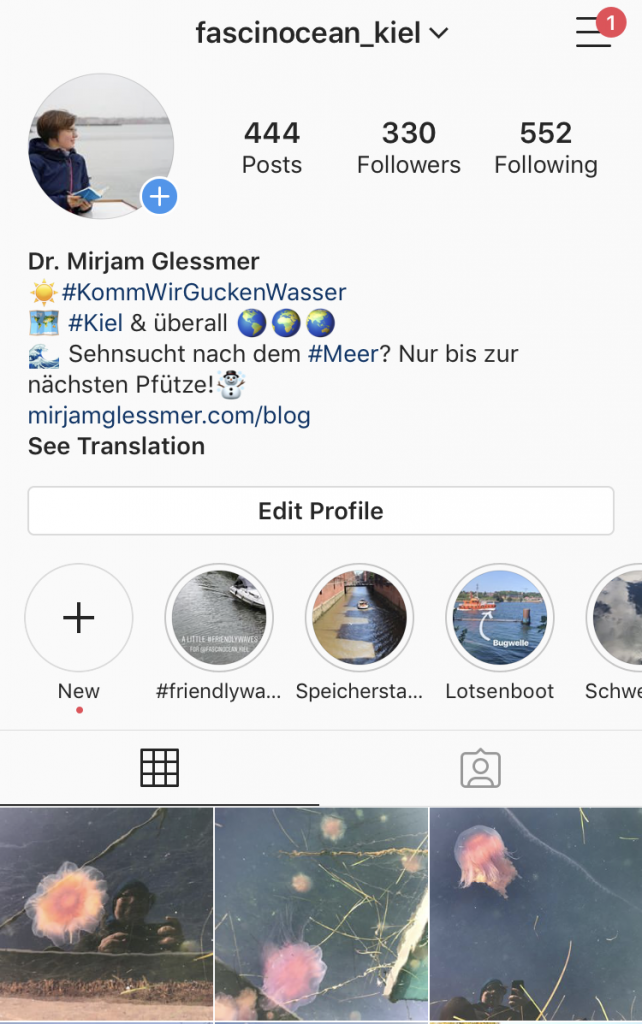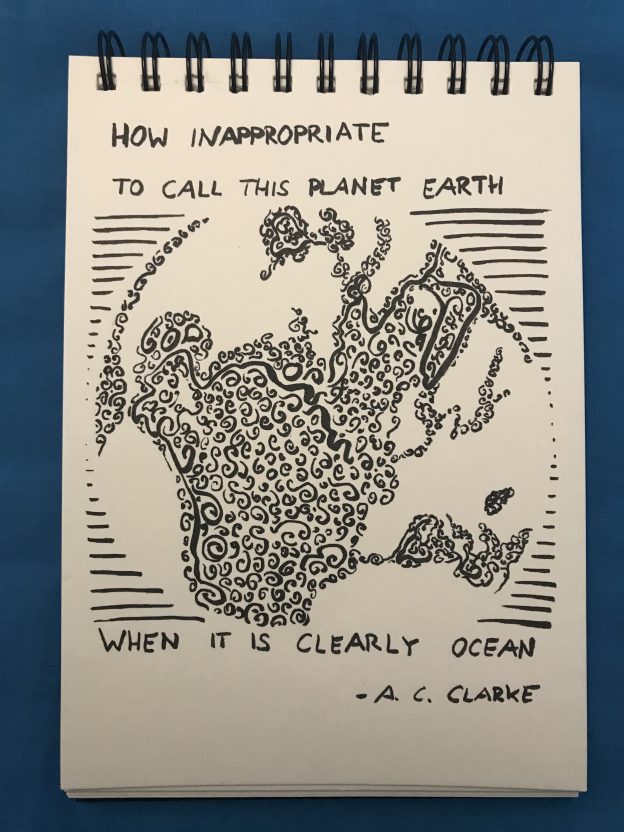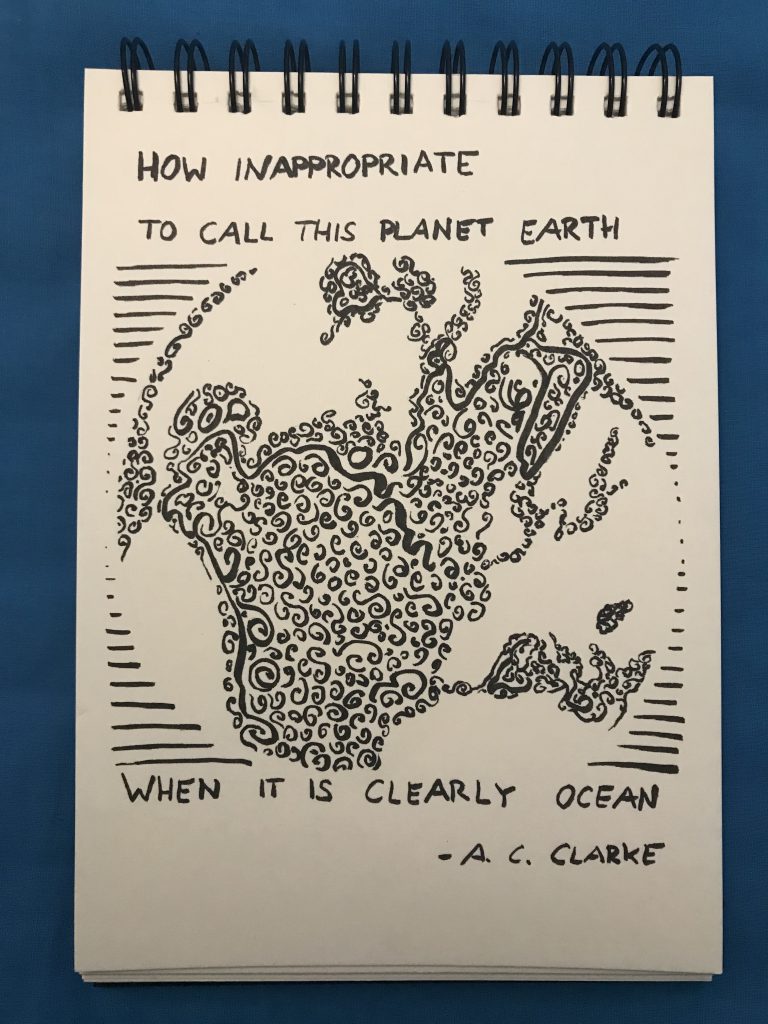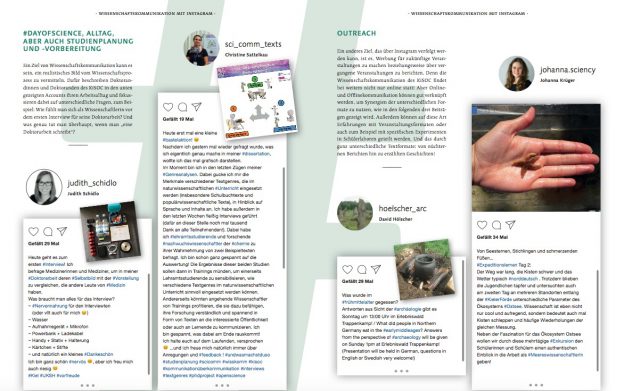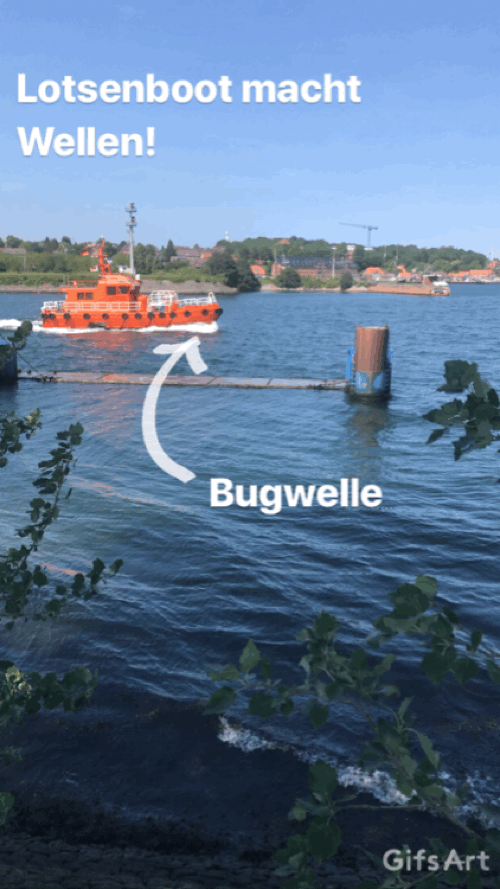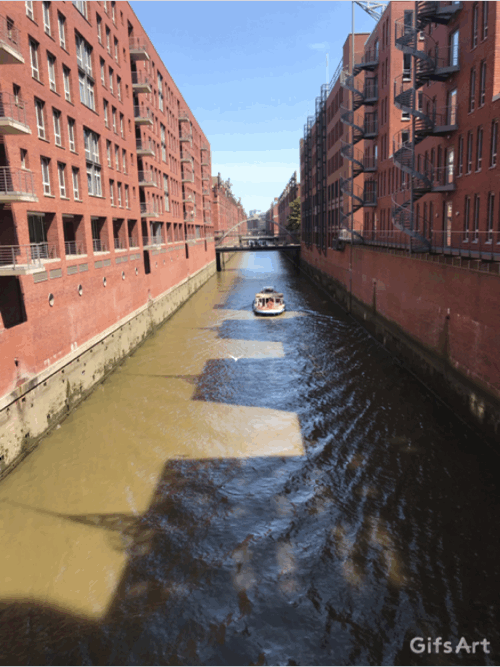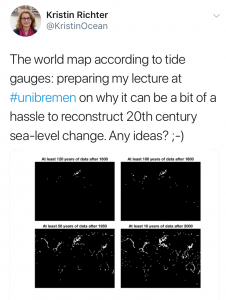All throughout November, I’ve posted pretty much daily to my #WaveWatching Insta @fascinocean_kiel.
And here are all the posts for you! If you prefer daily updates, why not follow my Instagram?
But here we go with a month’s worth of wave watching pics. First: a wake reaching the beach. How do we know it’s a wake? Because it is so super regular (and also because I saw the ship it belongs to ;-))

And then: Tiny rip currents!
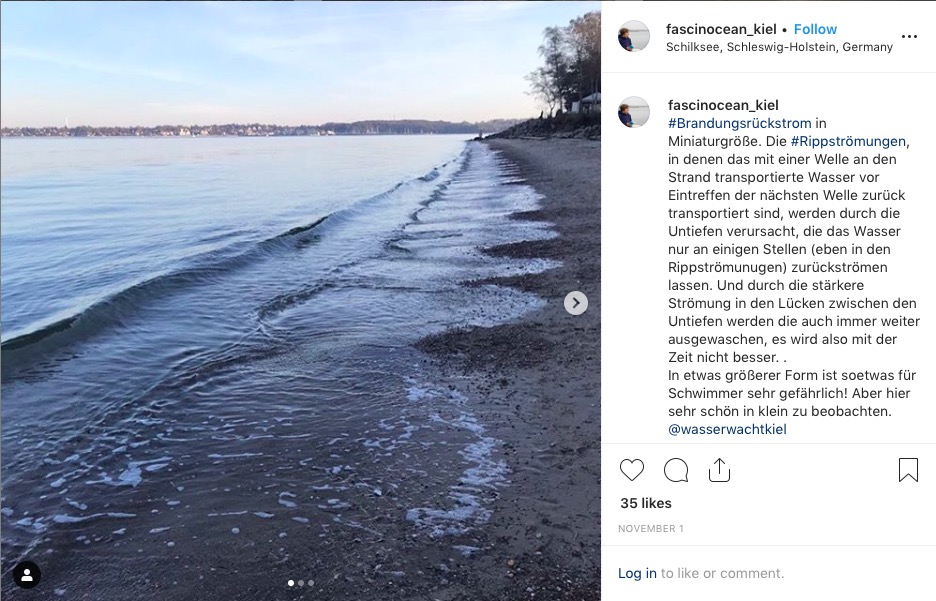
It was very nice to observe this dangerous phenomenon on a tiny scale.
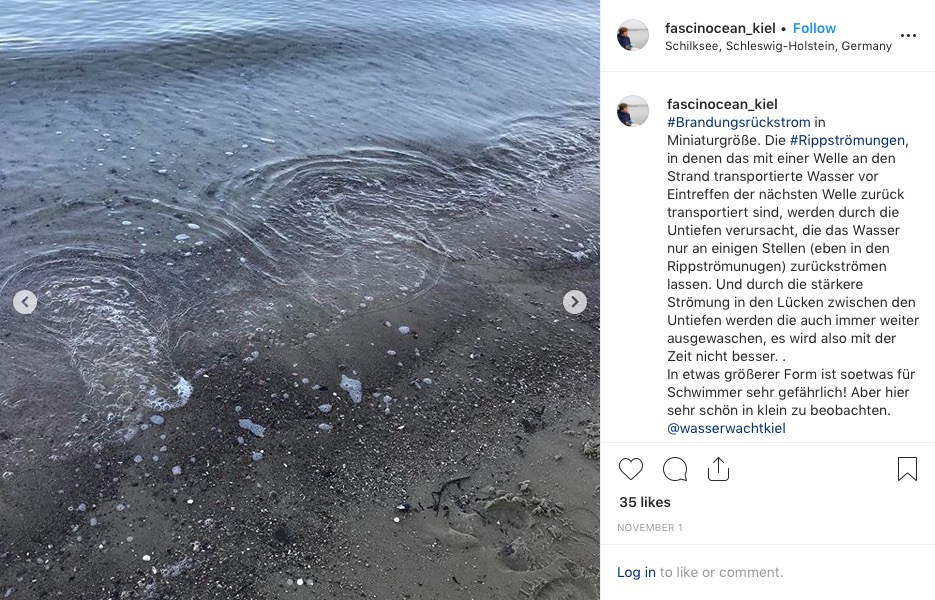
More rip currents…
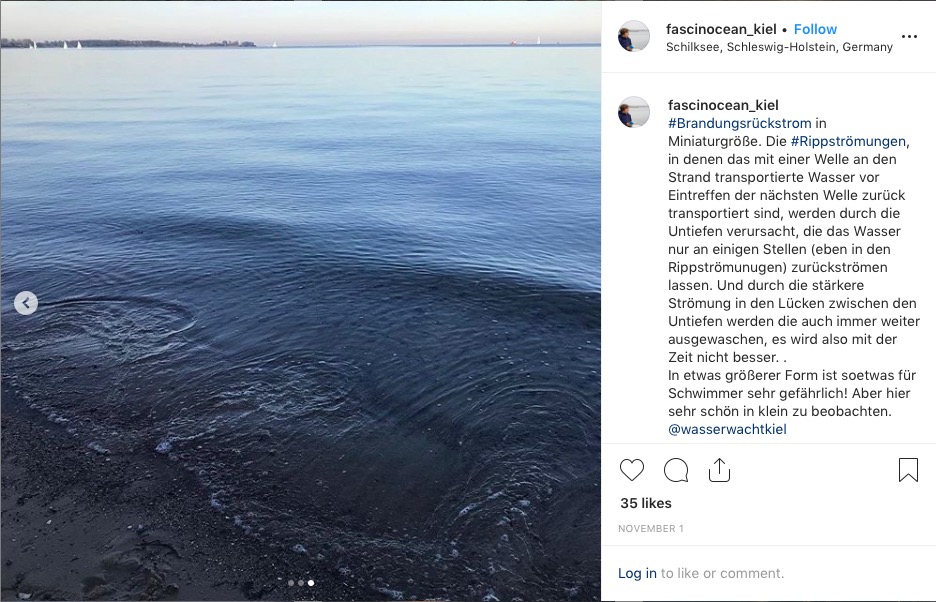
And a seagull that flew away before I could get the picture I wanted.
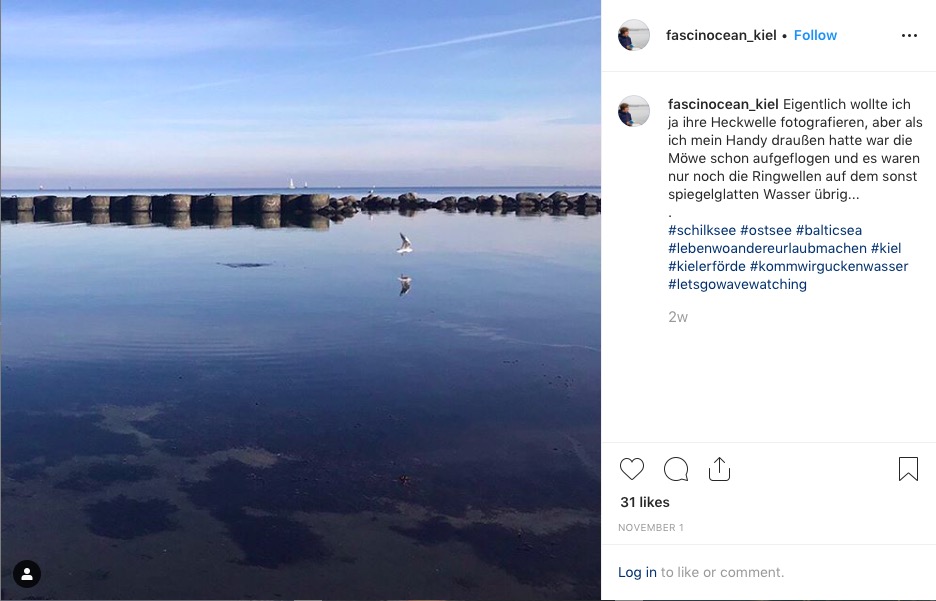
The Oslo ferry changing course and sailing towards the sun… At least for a short moment, before finishing the 180 degree turn and backing up into its berth in Kiel port.
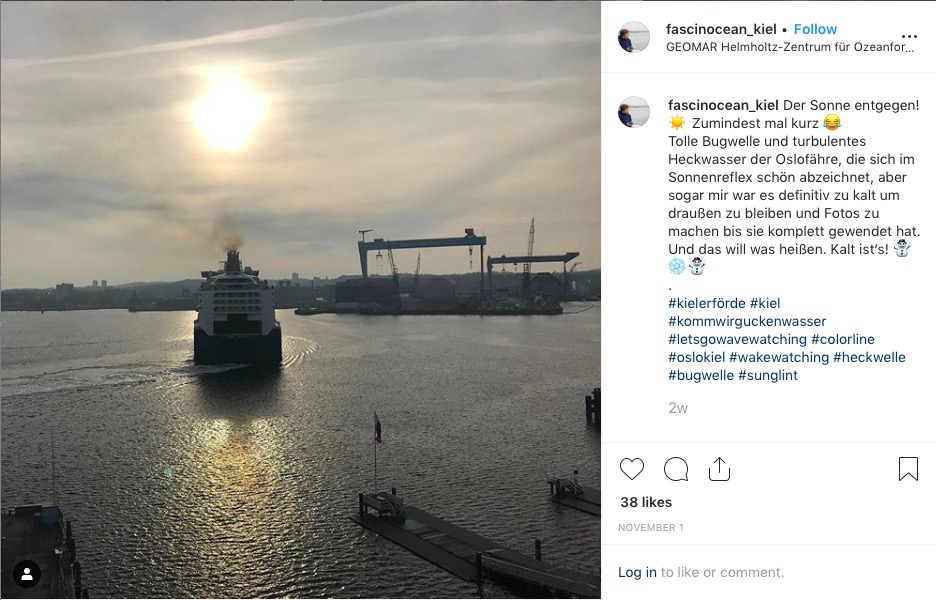
Such a nice criss cross pattern of waves!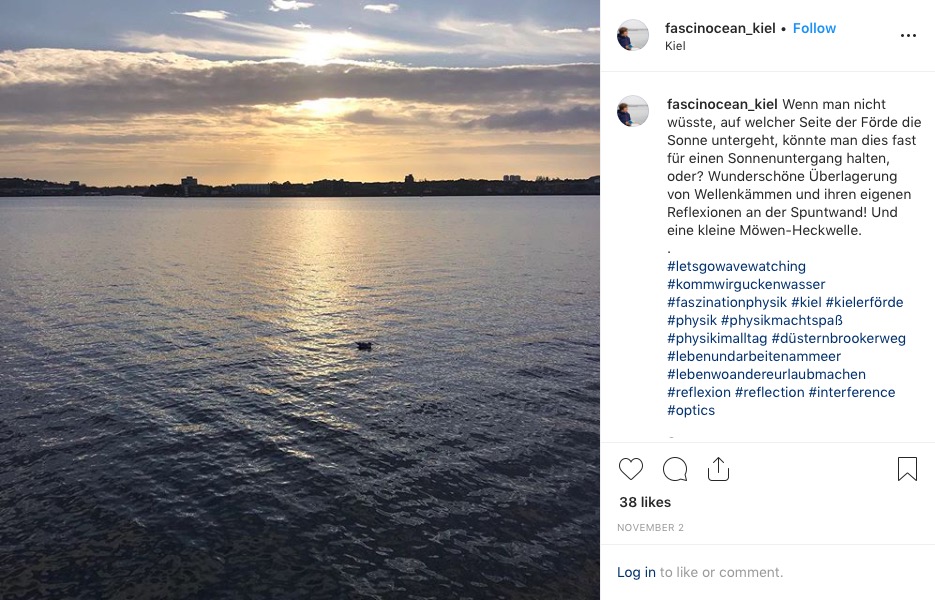
And a movie of a criss cross happening in a different spot.
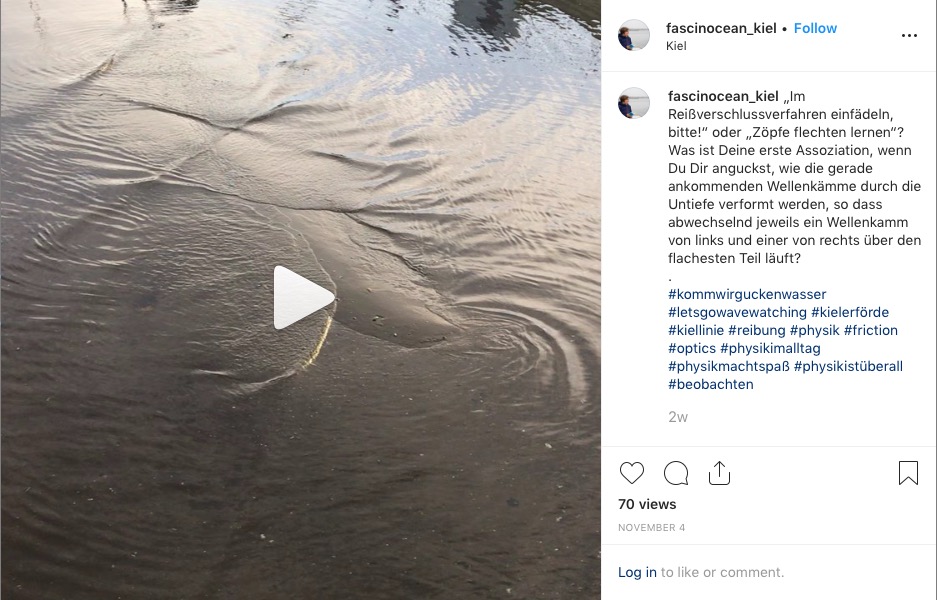
Another criss cross.

Fog in Kiel. I guess it’s November…
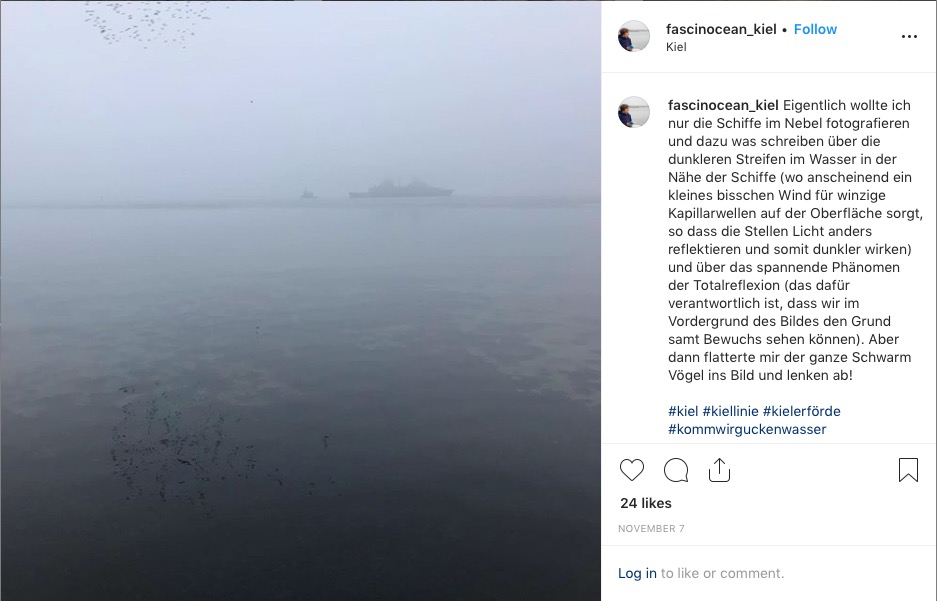
More fog.

Another seagull that flew away before I could take the picture I wanted to take.

The Oslo ferry turned and left us with its turbulent wake.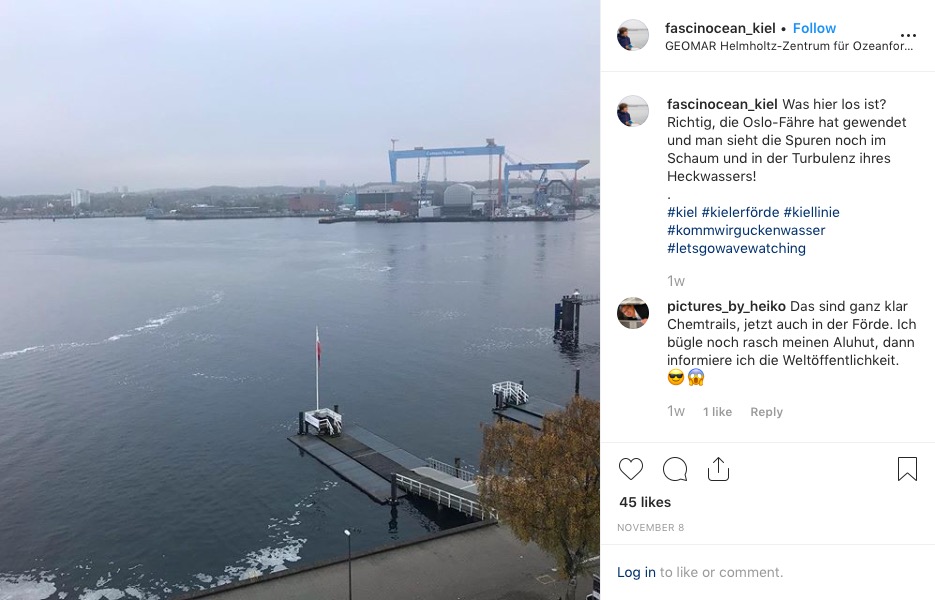
On the train south. This view usually looks a lot nicer with either a fountain or a Christmas tree… Plus there are super pretty street lamps that were taken away for the construction period.
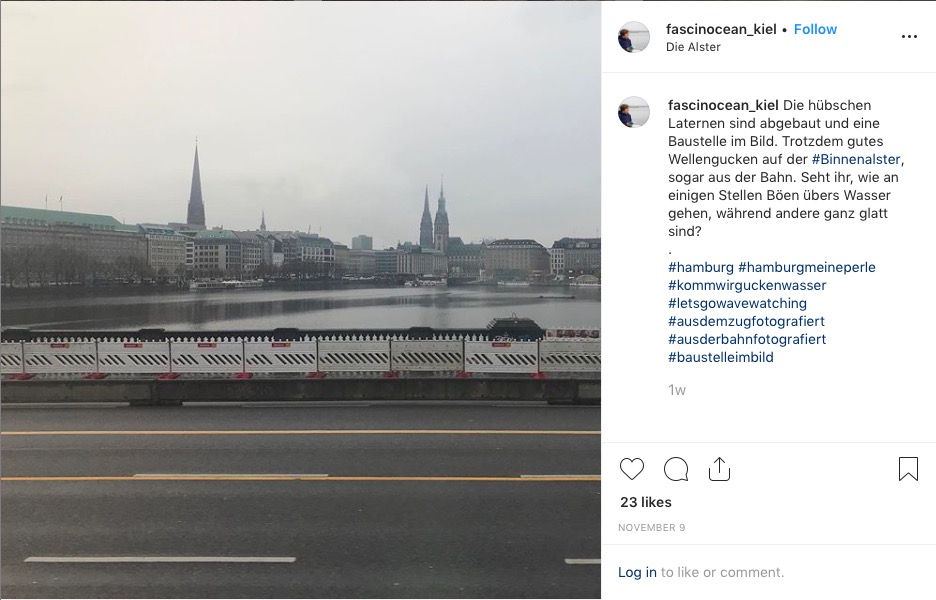
This is the view I know and love… At very low wind conditions.
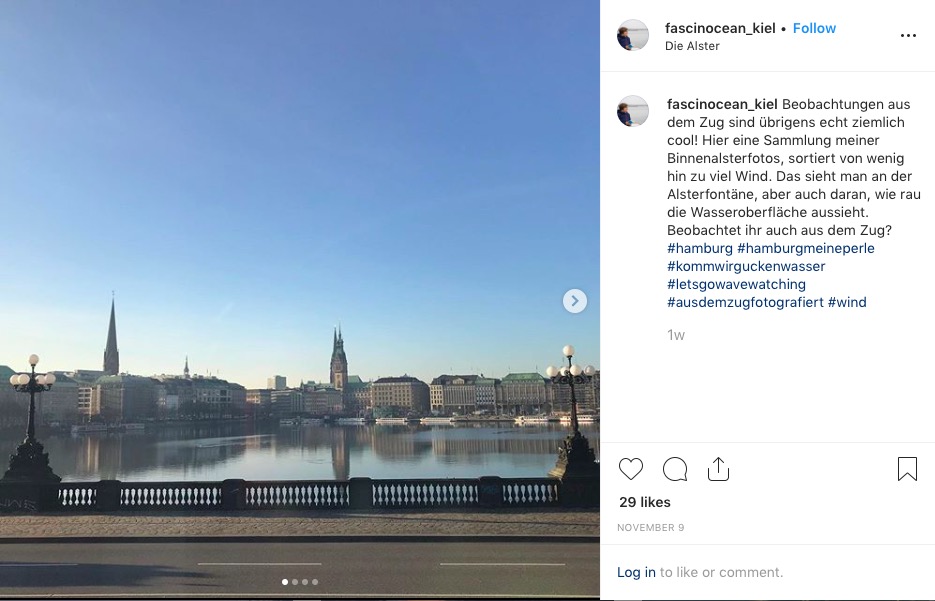
Slightly more wind… And can you see it’s taken from a train? Wave watching from trains is fun!
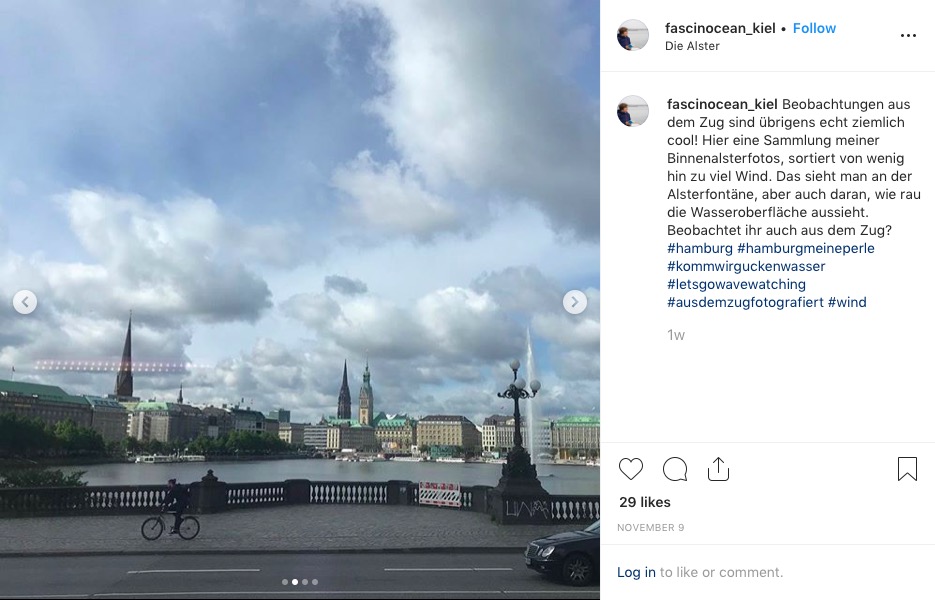
And even more wind!
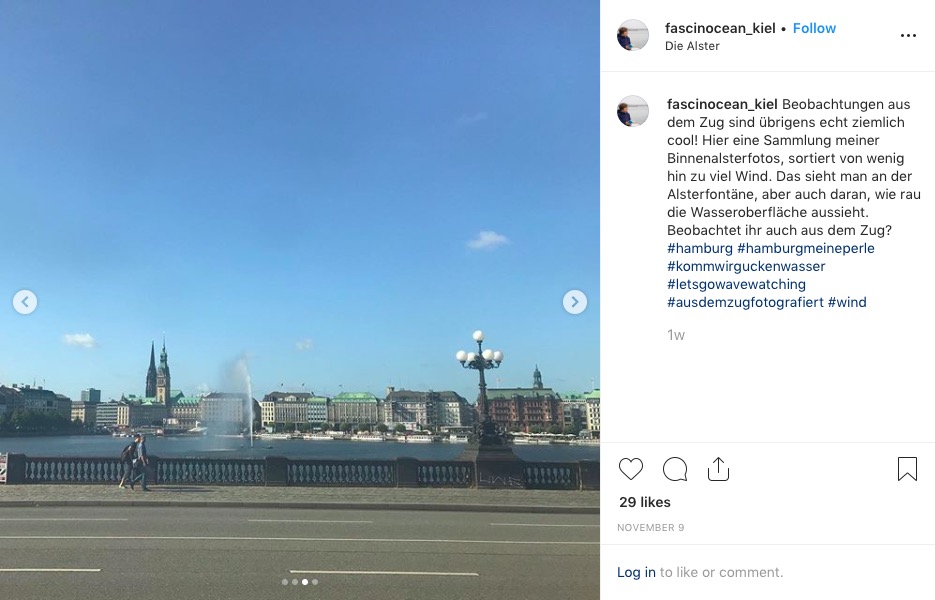
And even more wind!
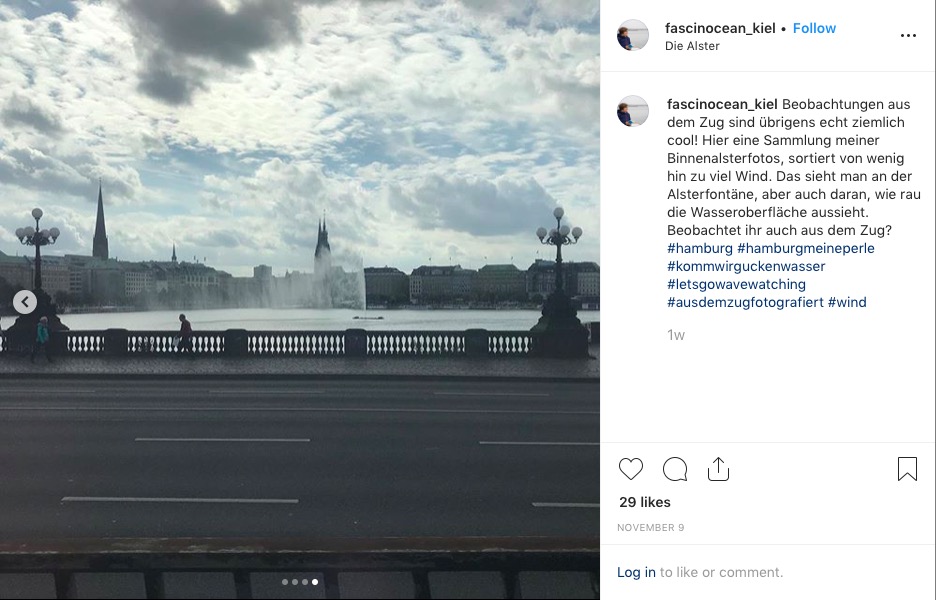
Oh, and then my sister & her kids & I went to look at the ship lift in Scharnebeck. So awesome! Here we are looking out on the lower part of the canal, the basin with the ship is what looks like the ceiling in the picture below!
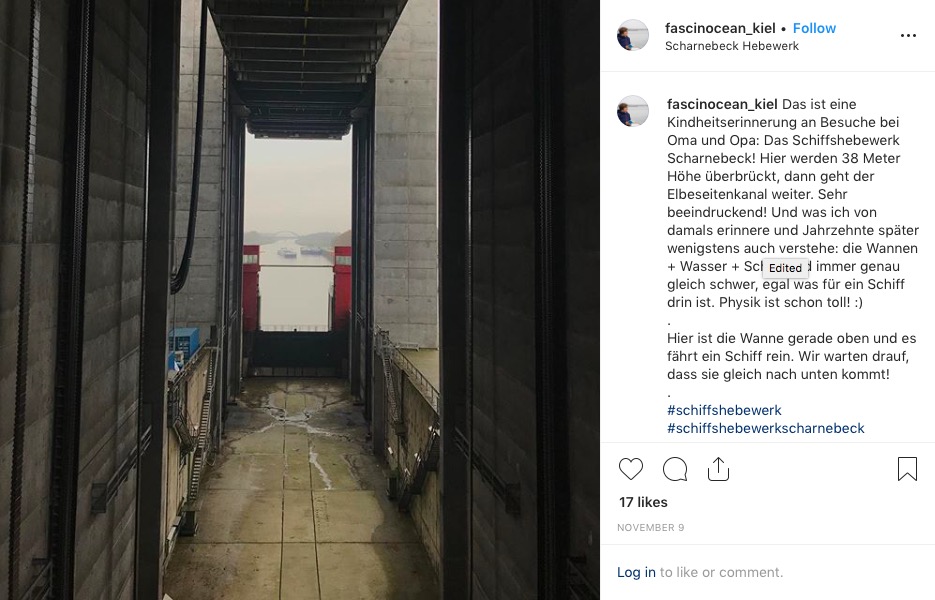
When that basin has been lowered all the way (38 meters! Quite impressive, don’t you think?), we can watch the ships sailing out.
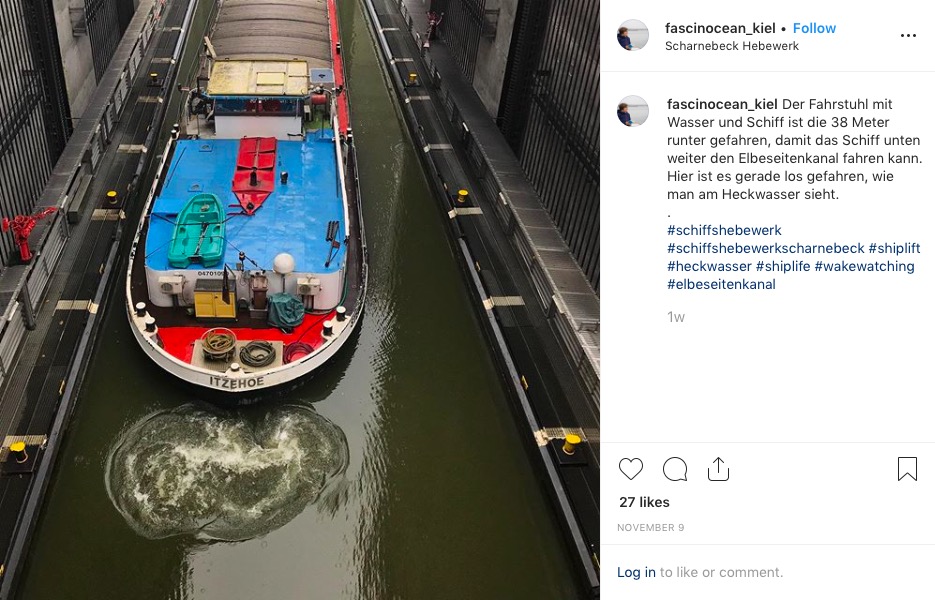
Bye bye, ship! Have a safe journey!

Waves in a little well.
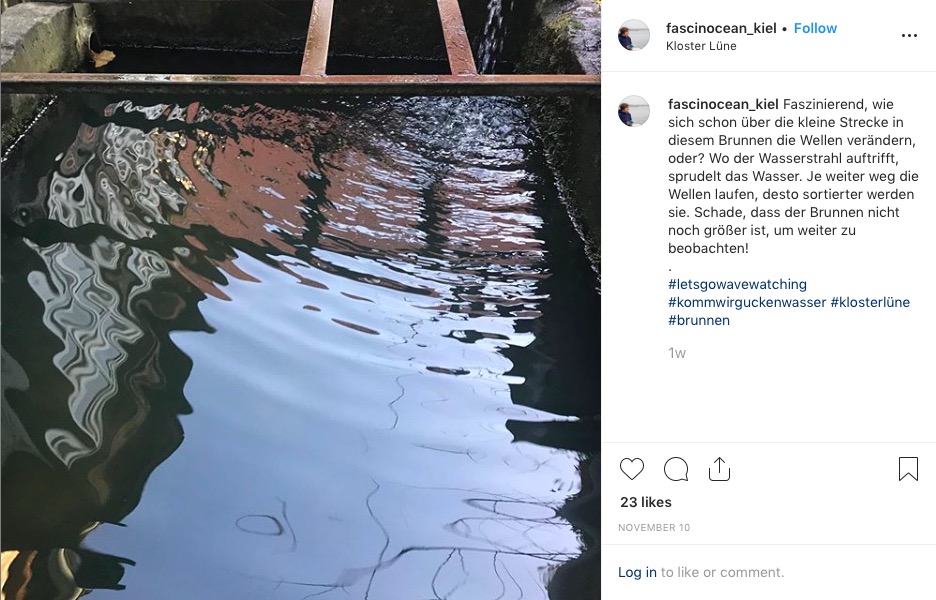
Autumn leaves and hydraulic jumps!
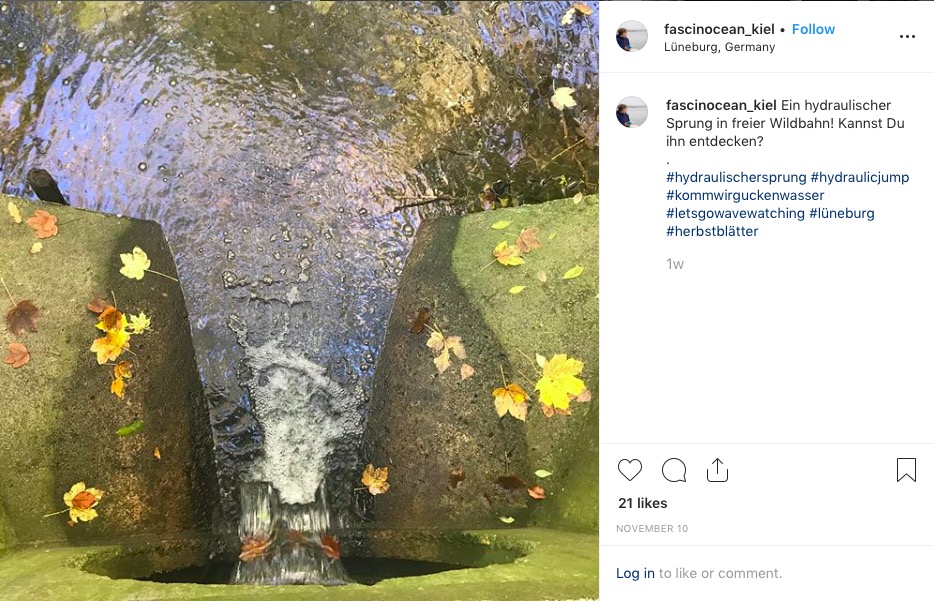
Sun set on the train home.
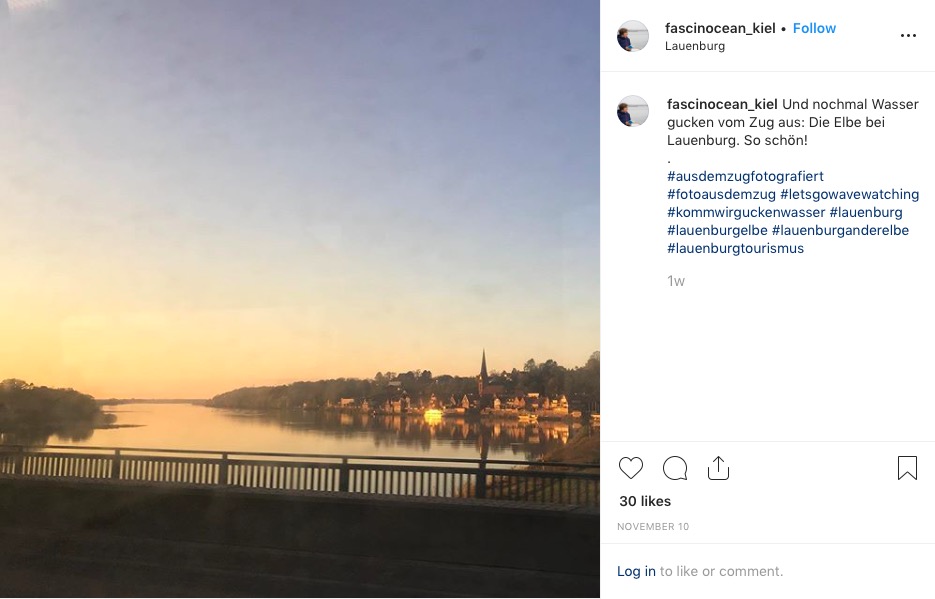 Oh, and a sun rise with a ship sailing backwards. Some days are weird like that…
Oh, and a sun rise with a ship sailing backwards. Some days are weird like that…
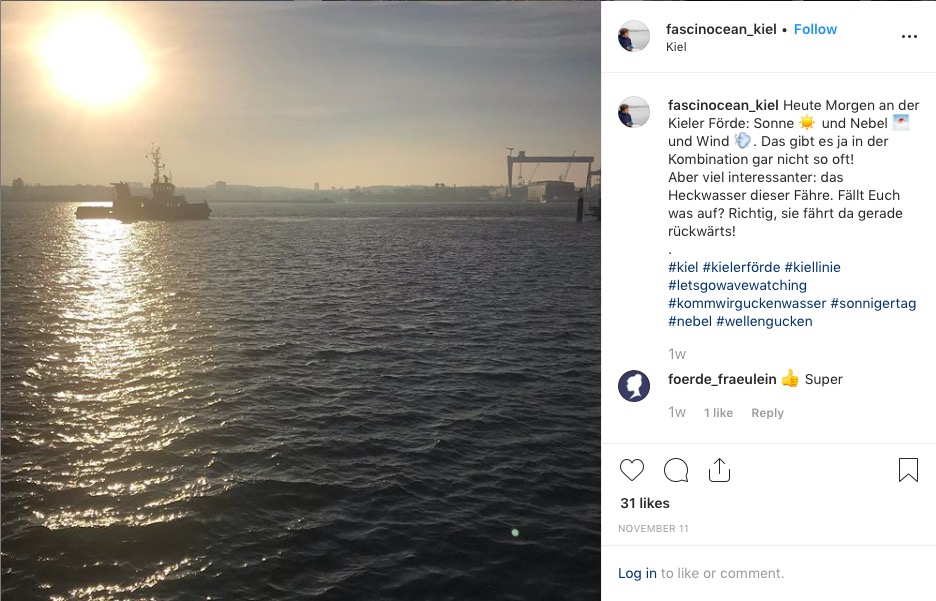
A seagull watching the Oslo ferry arrive in Kiel. Welcome!
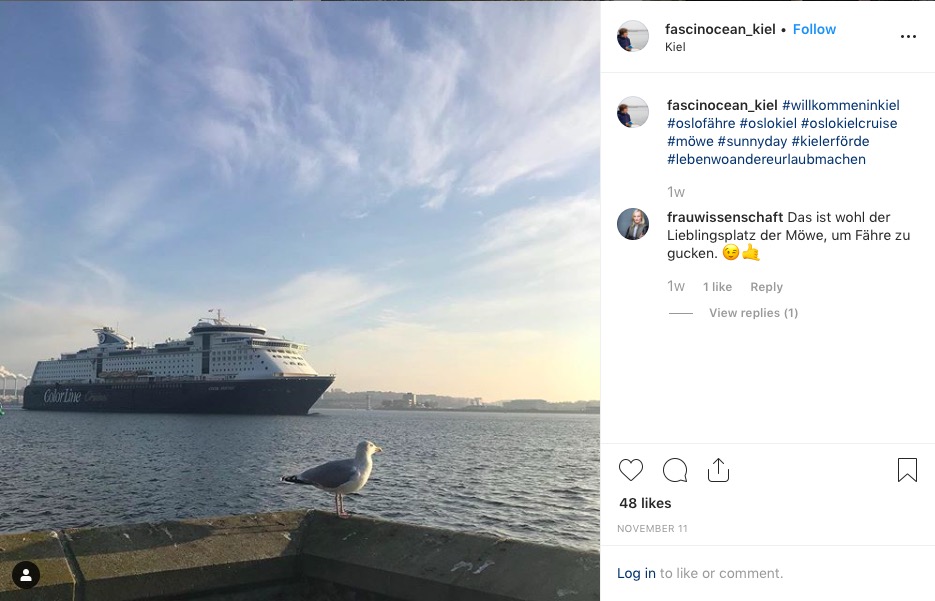
And the Oslo ferry turning.
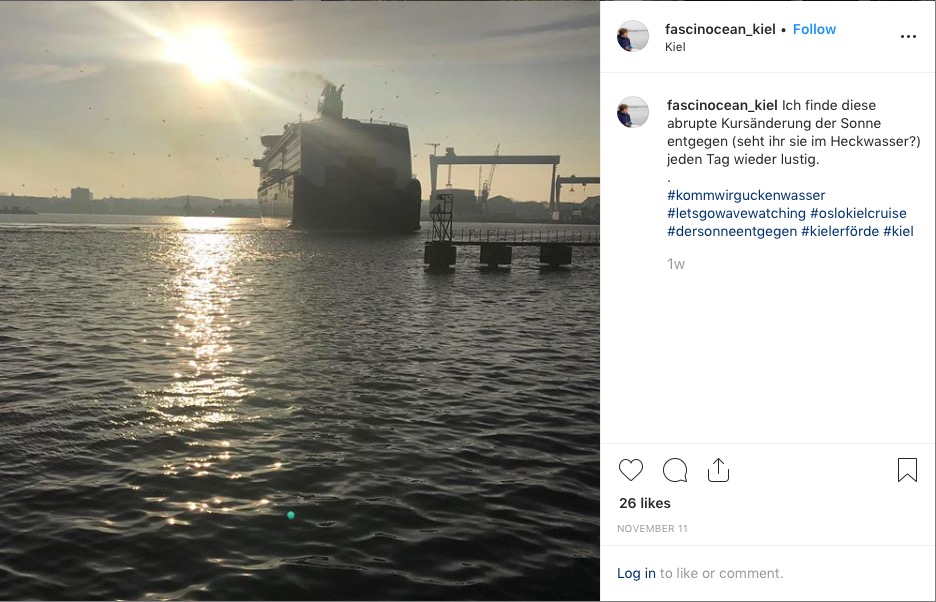
Pretty sunset on a very windy day!
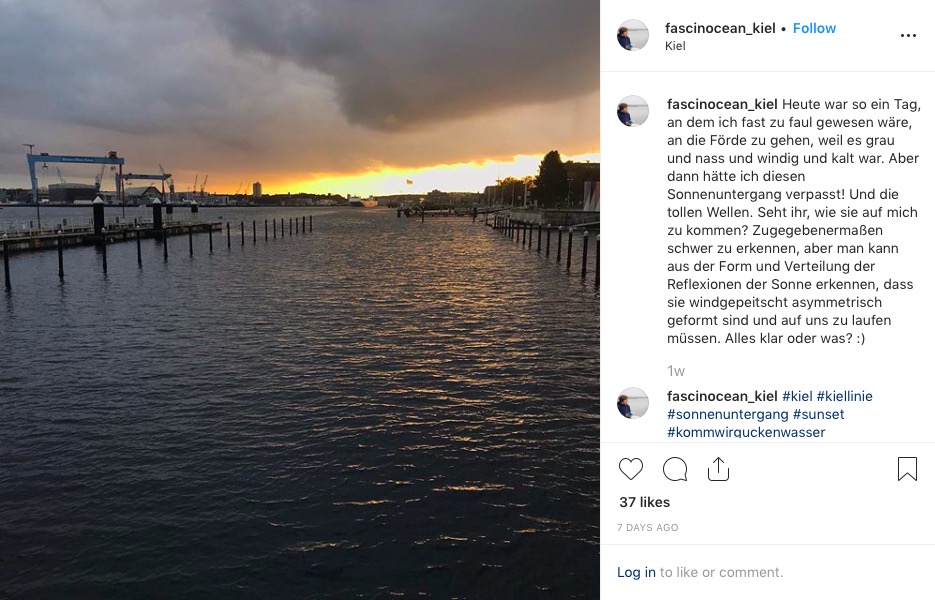
On the picture below, I commented if people thought those rain curtains would look like Northern Lights if I used the right filters.
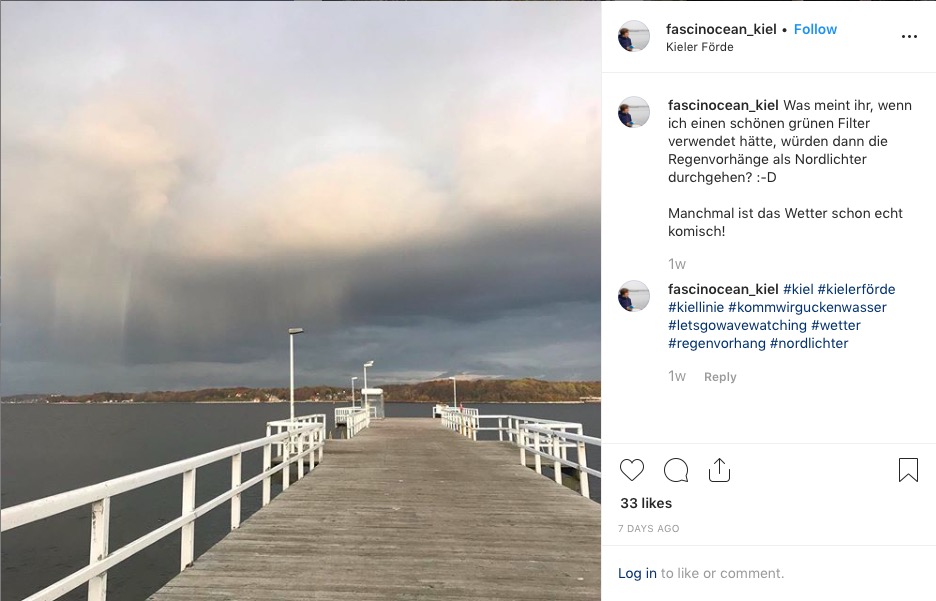
And this is what my brother-in-law did. Yep. Northern lights in Kiel! :-)
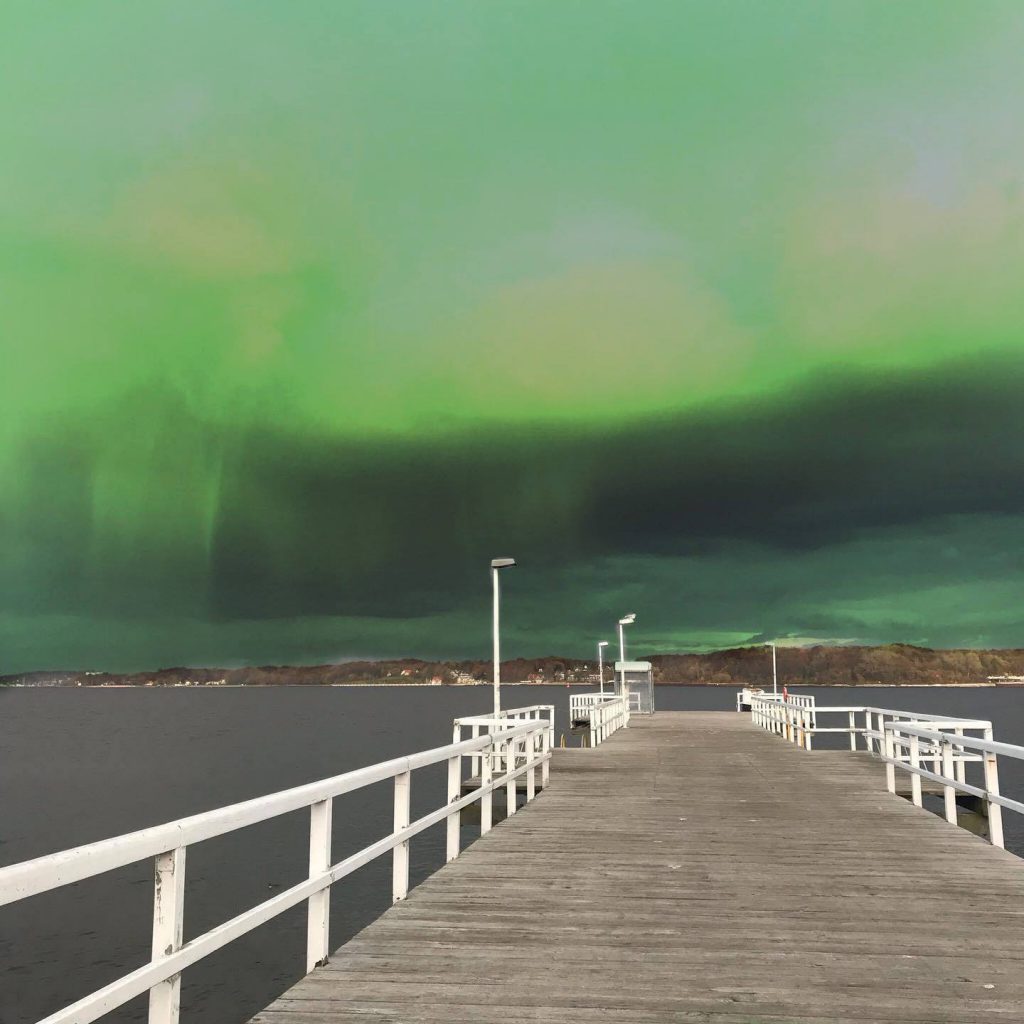
More sun set in Kiel.

And pretty autumn leaves!
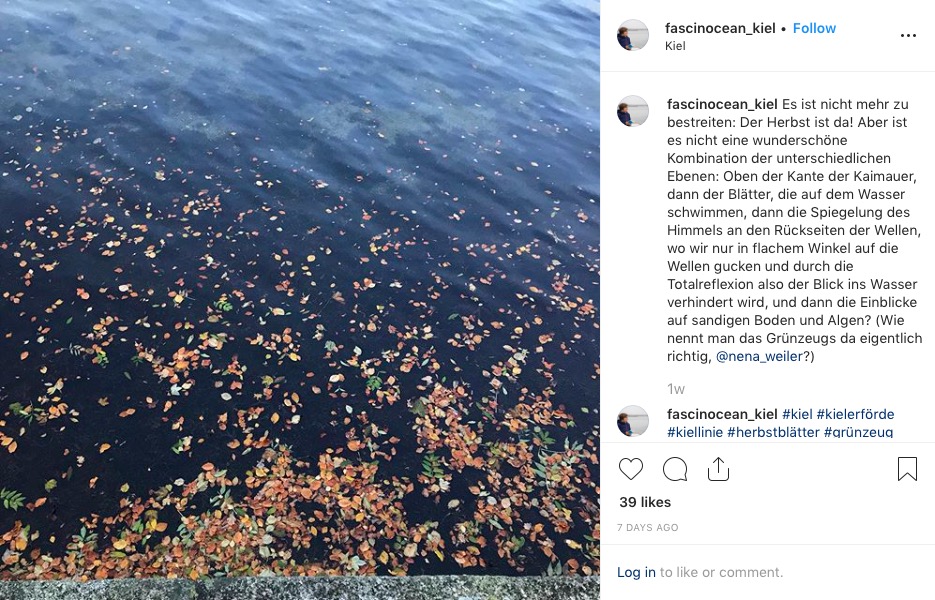
The faucet at a conference center I gave a workshop at.

Part of my Insta-Story that day:
More pics from Kiel.

No idea what caused this very sharp distinction between the two parts of Kiel fjord!
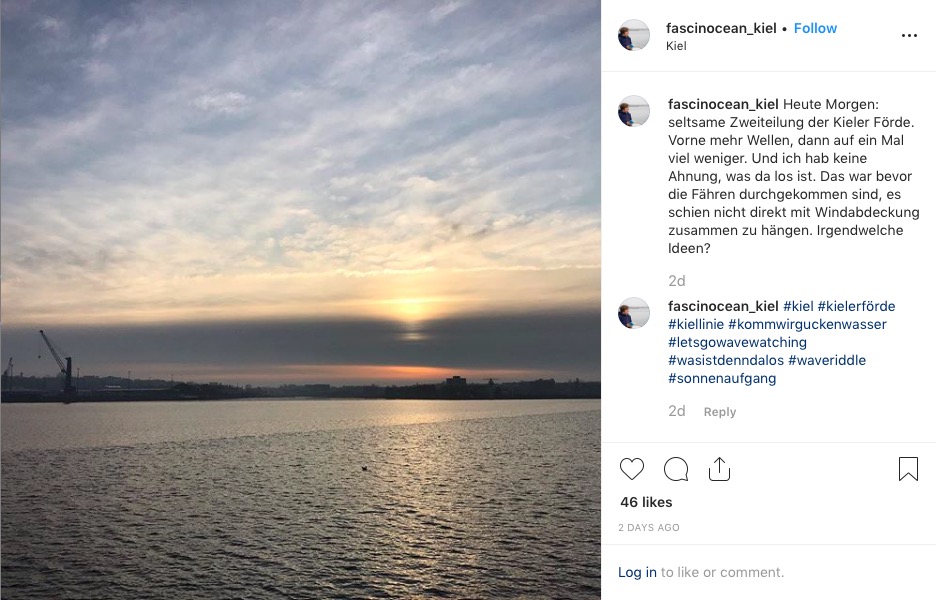 I like this little plant!
I like this little plant!
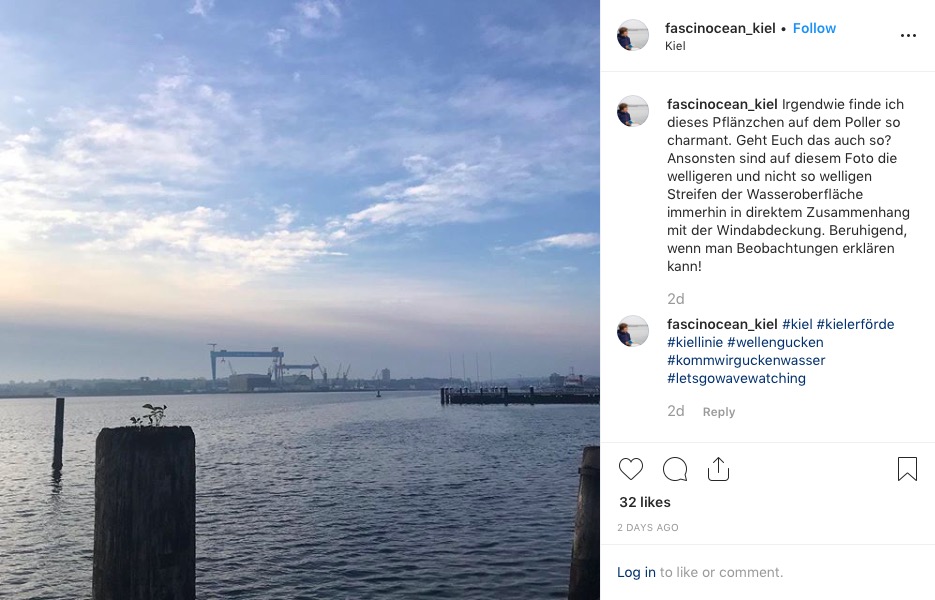
Fog again…
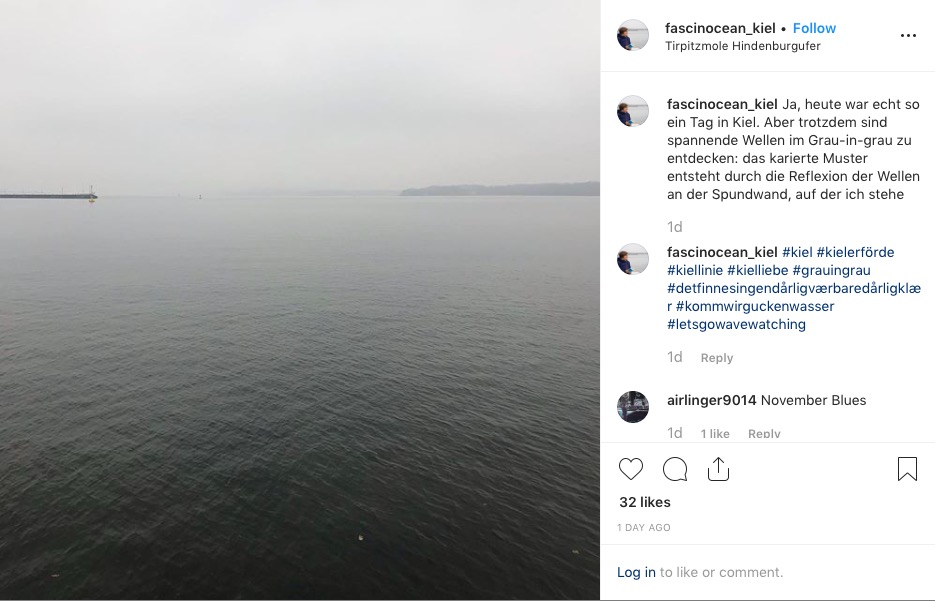
But autumn leaves!
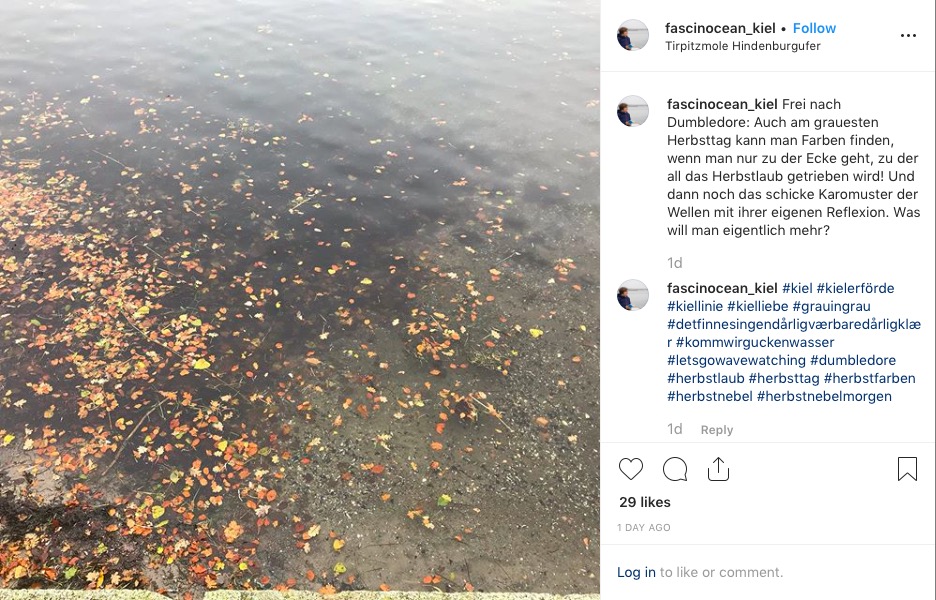
The pilot ship and the Oslo ferry.
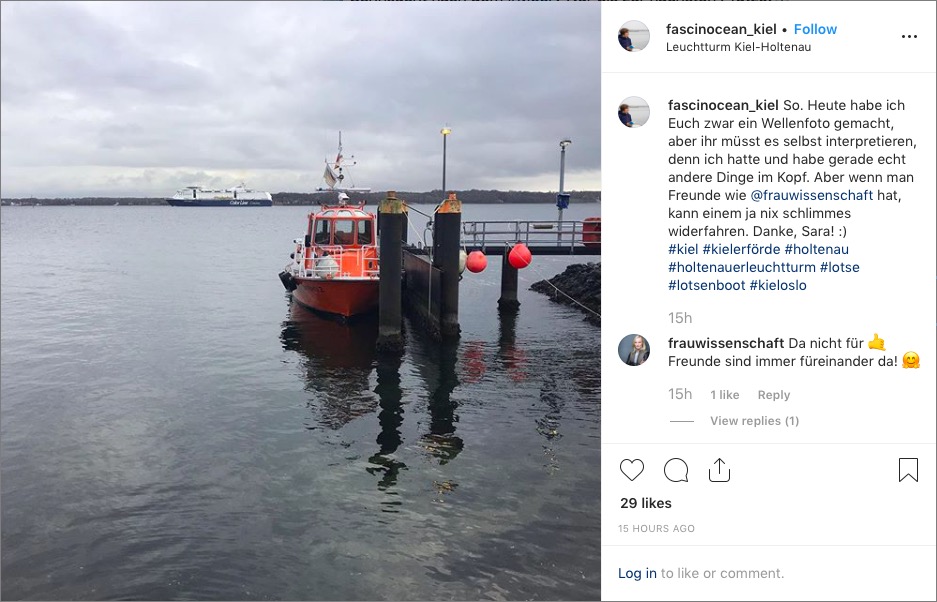
Very cool discovery that Sara made, check out the blog post I wrote about it.
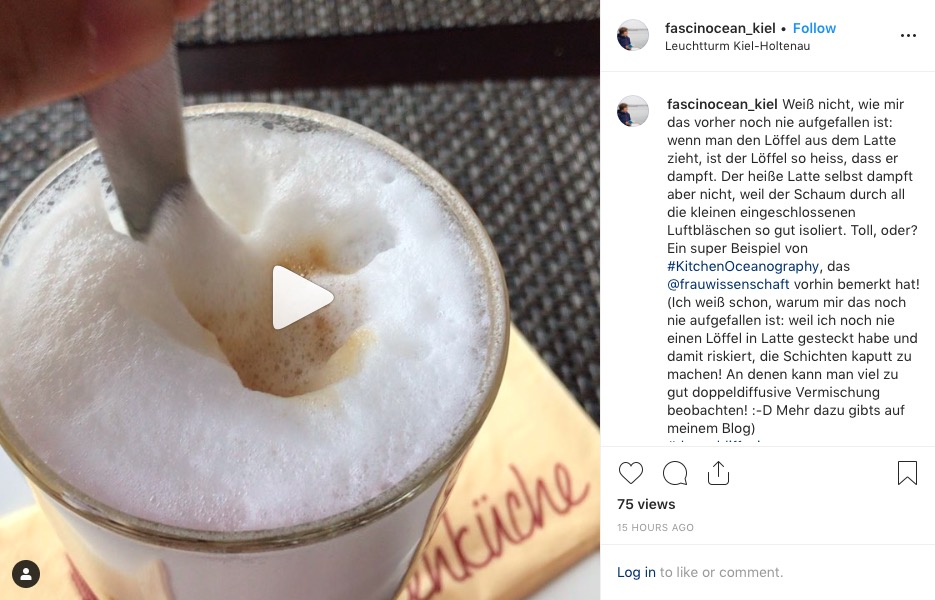
A small tug and its wake.

And the wake by itself.
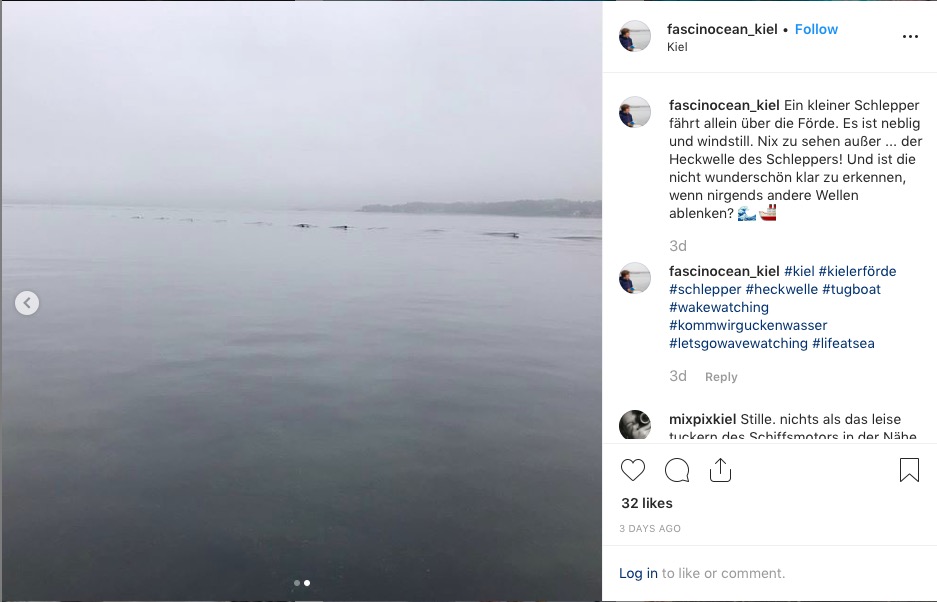
Now the wake arrives at the sea wall!
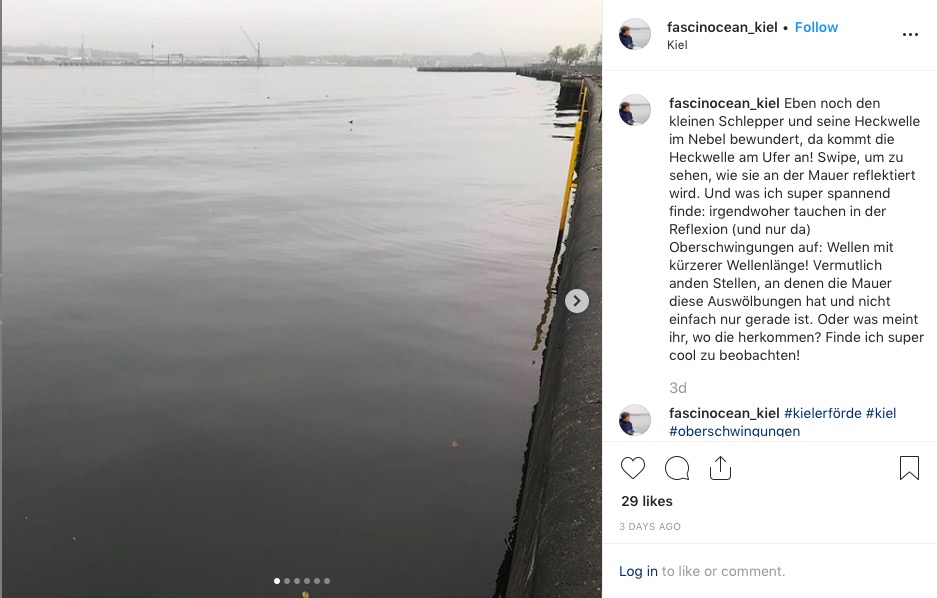
And is being reflected.
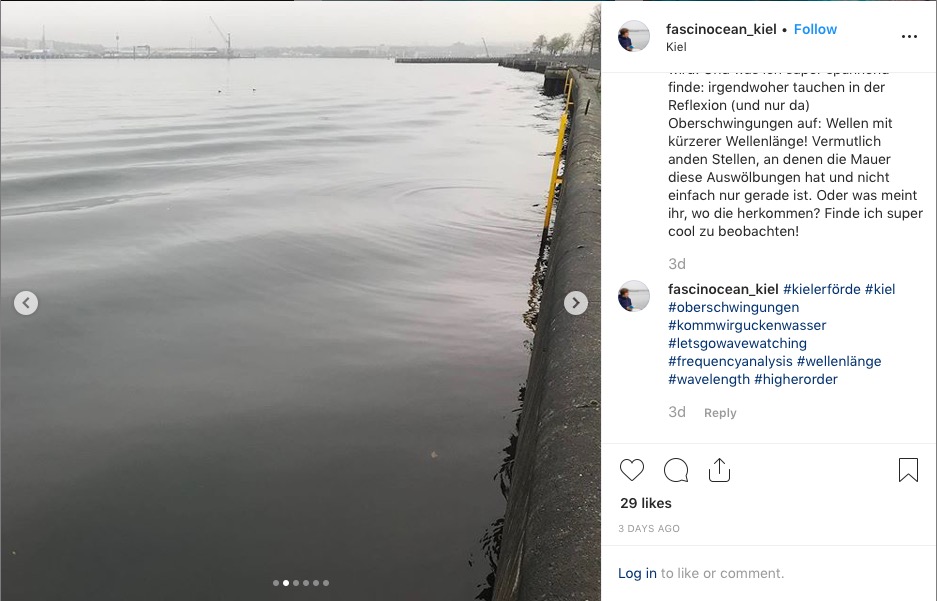
Very cool interference pattern, especially with the added waves caused by the irregularities in the sea wall.
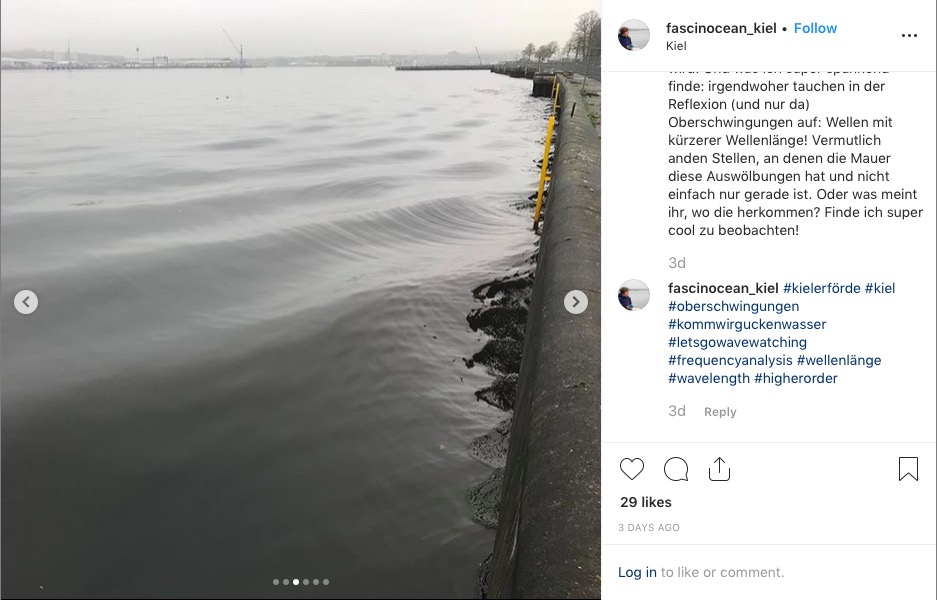
Looks so pretty!

I find it super fascinating.
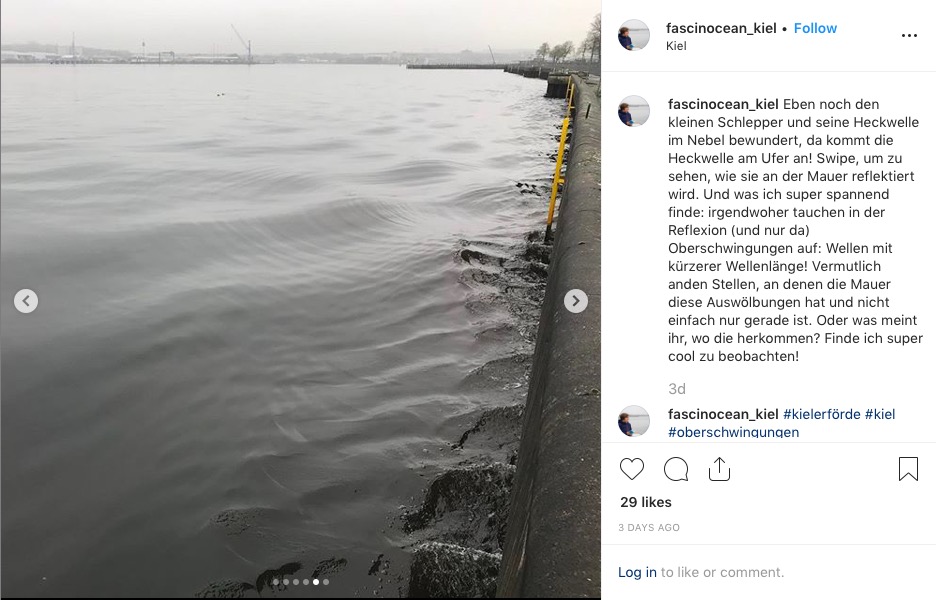
No idea where all those higher order waves come from!
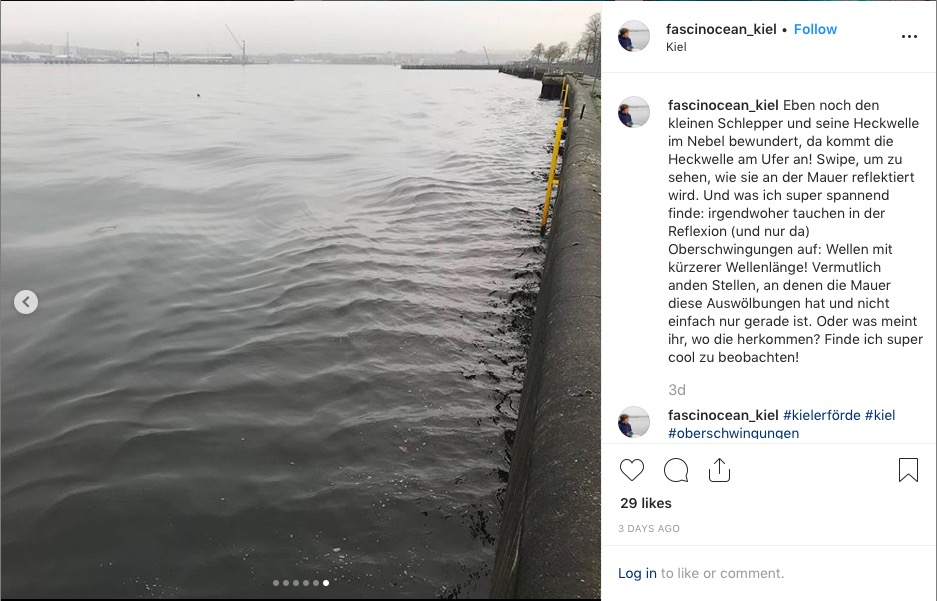
Oh, and my overturning circulation experiment.
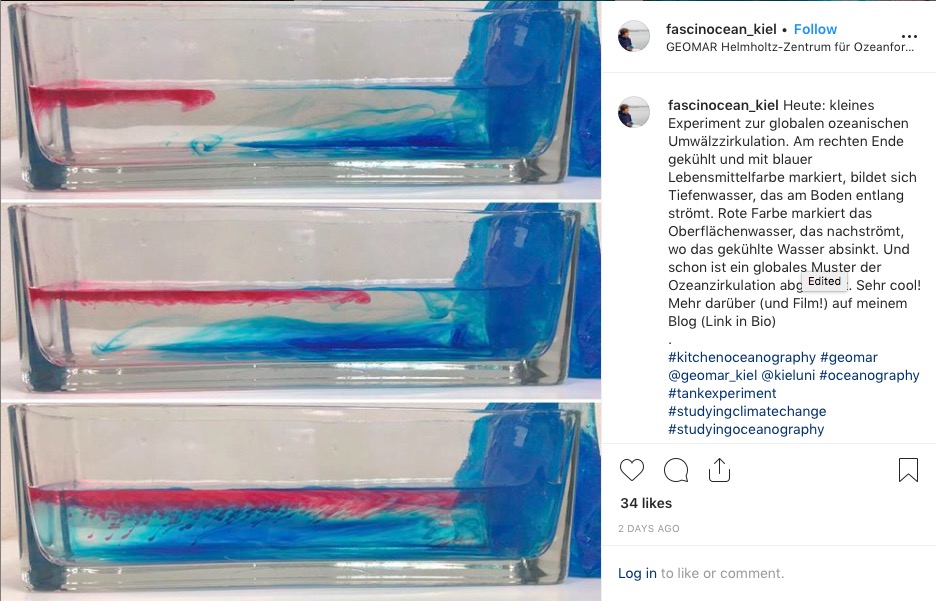
And the comparison of rotating and non-rotating thermally driven circulations.
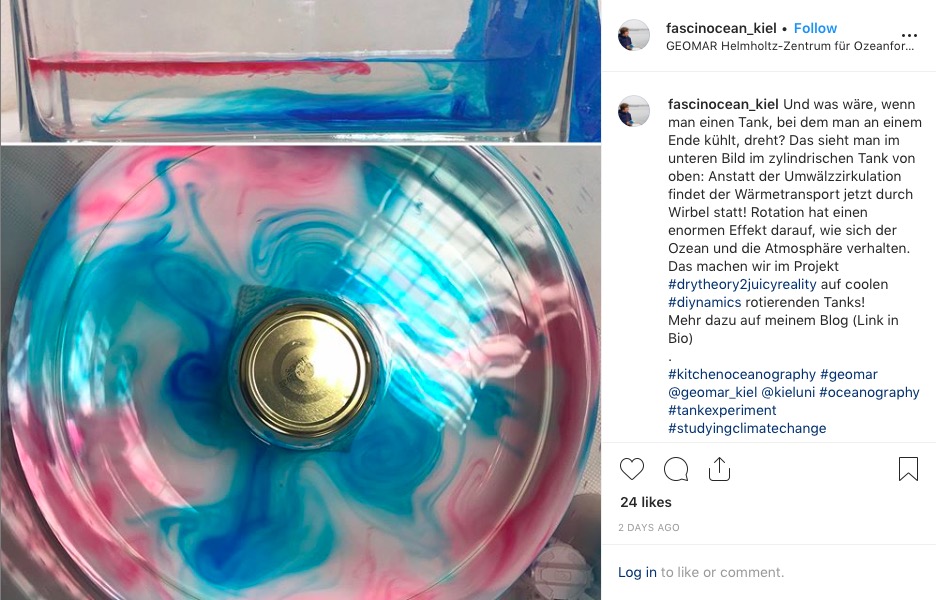
And salt fingering!
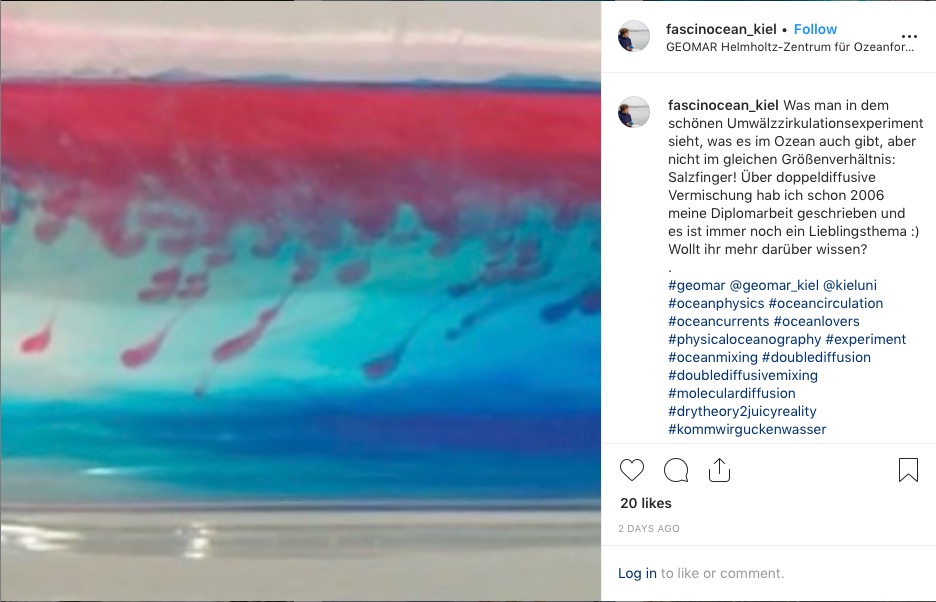
And wave watching in the dark.
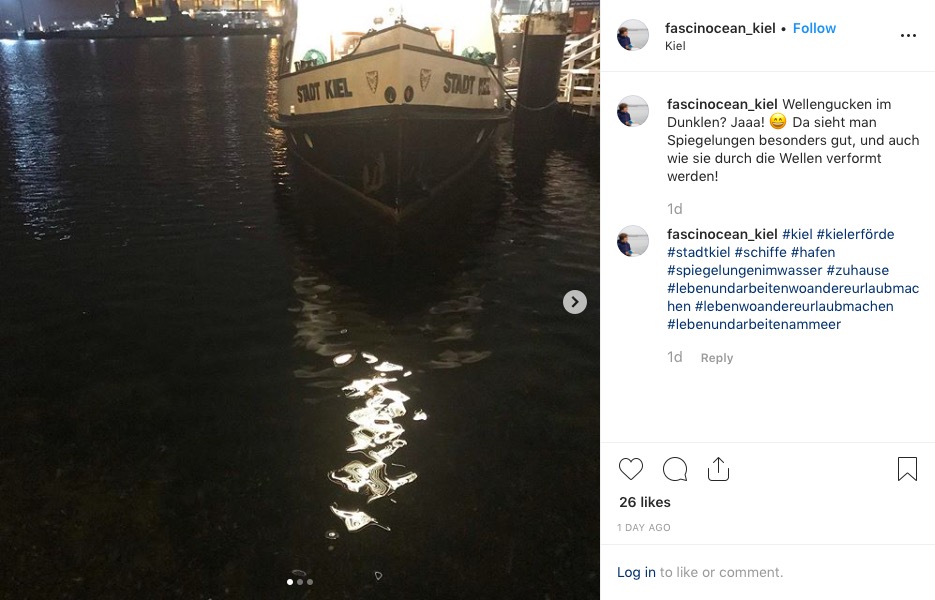
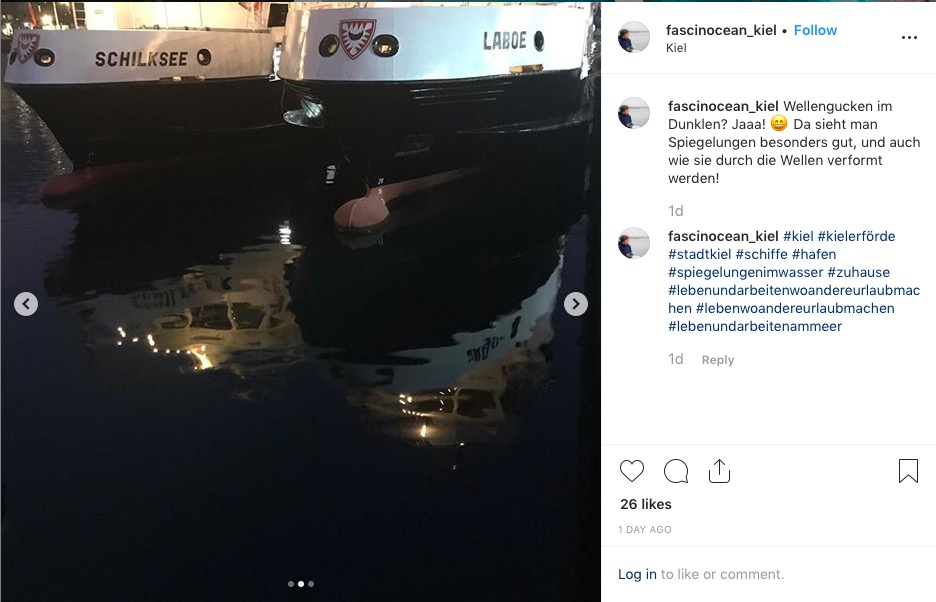
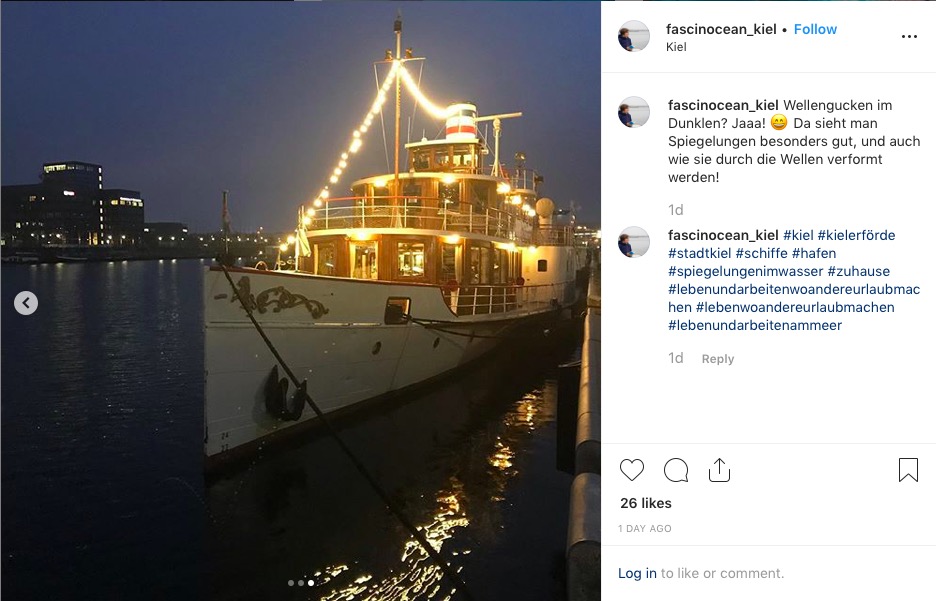
Aaaand: A trip to the beach!
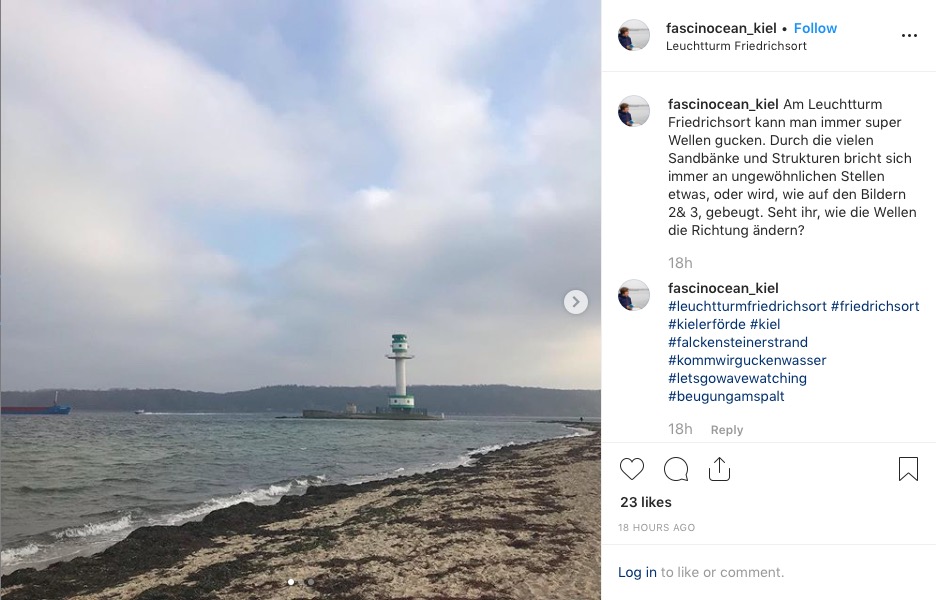
Always nice to see waves running around obstacles into sheltered areas like here:
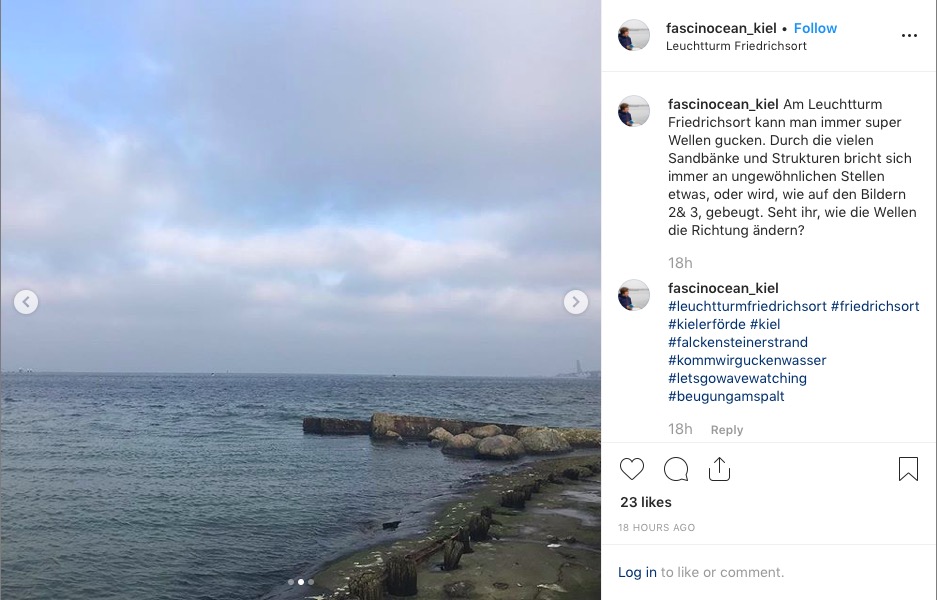
And here:
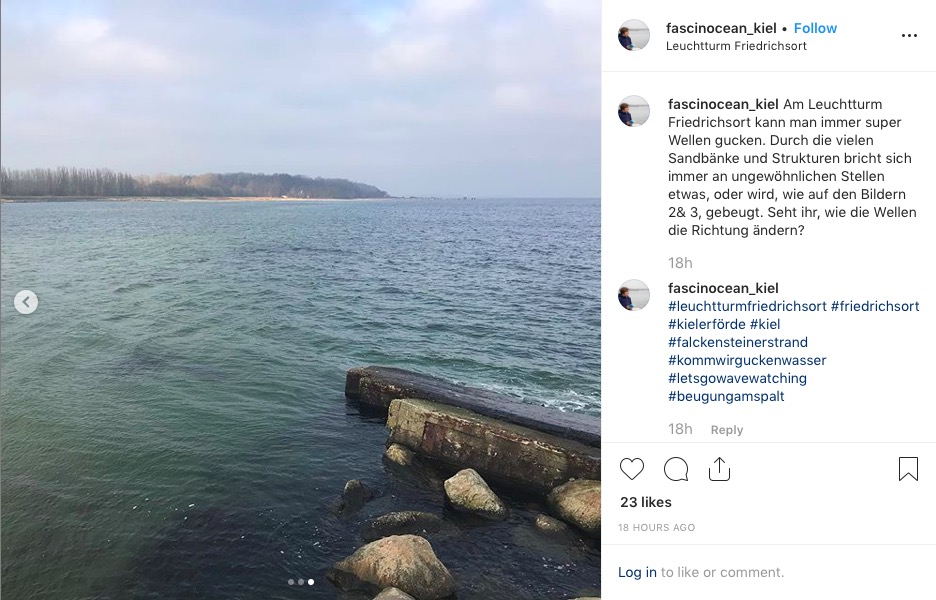
And even though at first I was pretty annoyed that someone was walking through my picture, I think it makes it kinda entertaining. What do you think, did her feet stay dry?
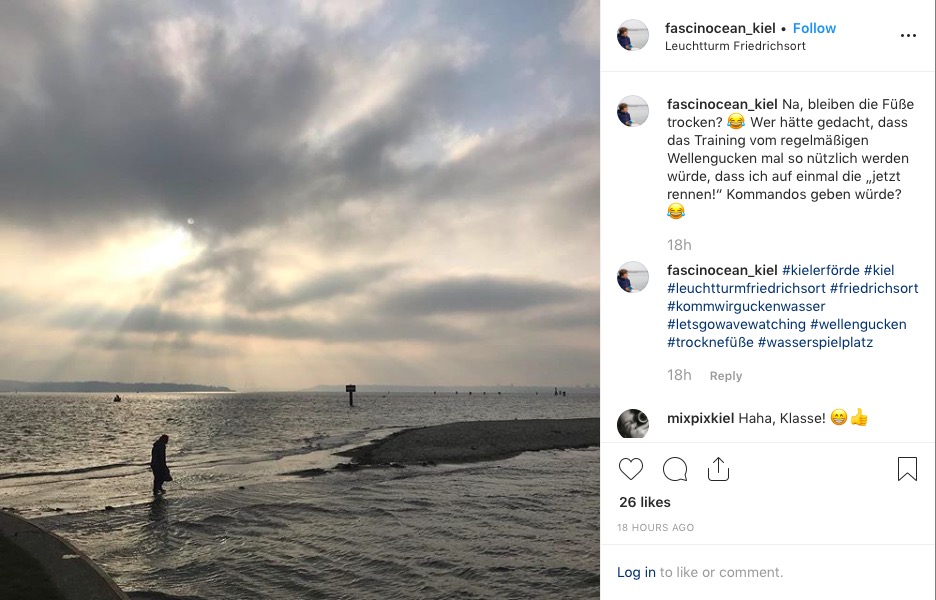
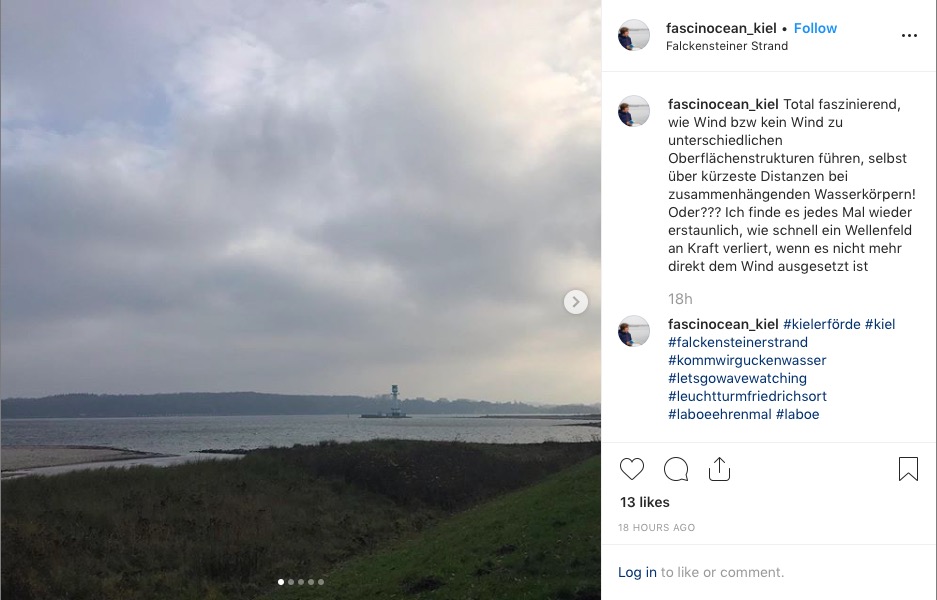
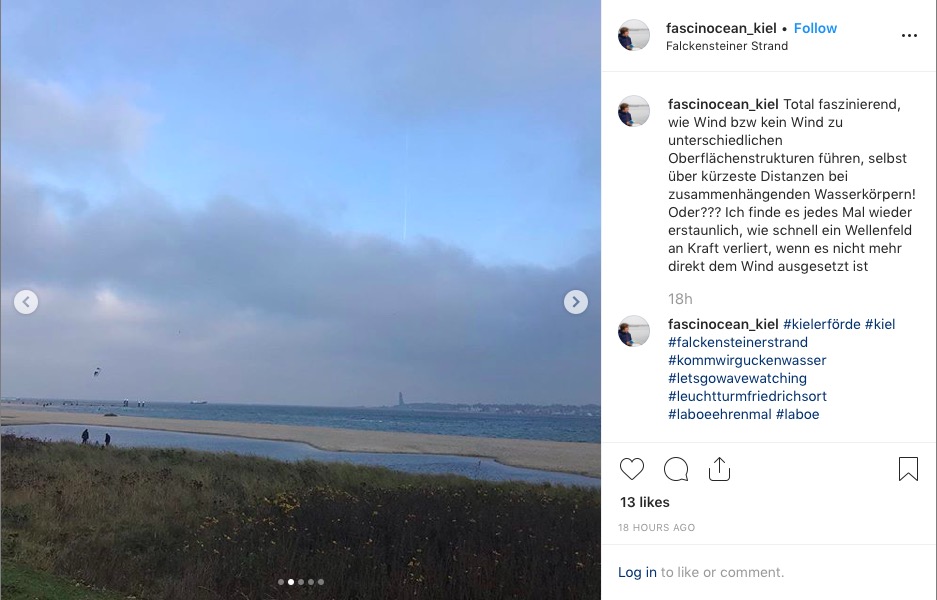
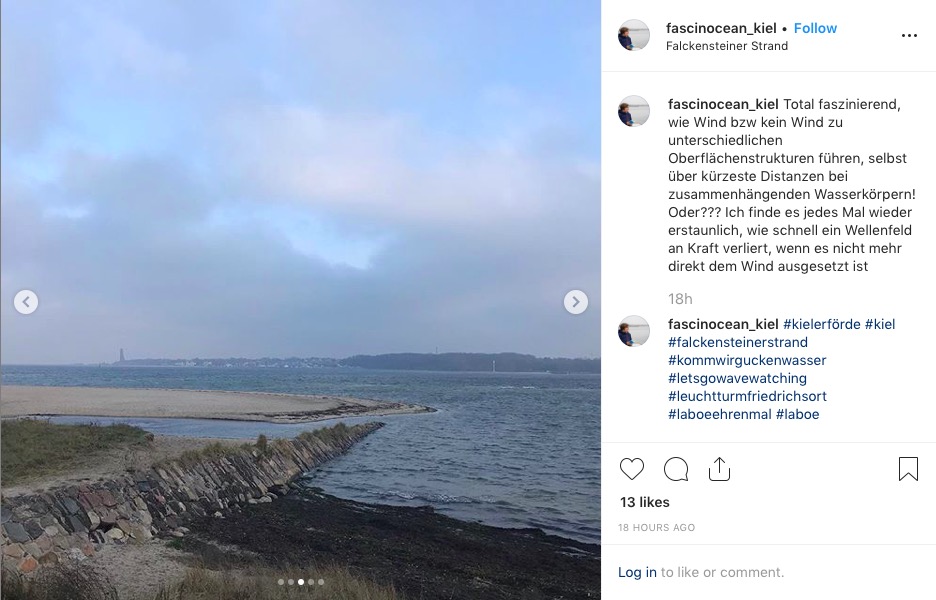
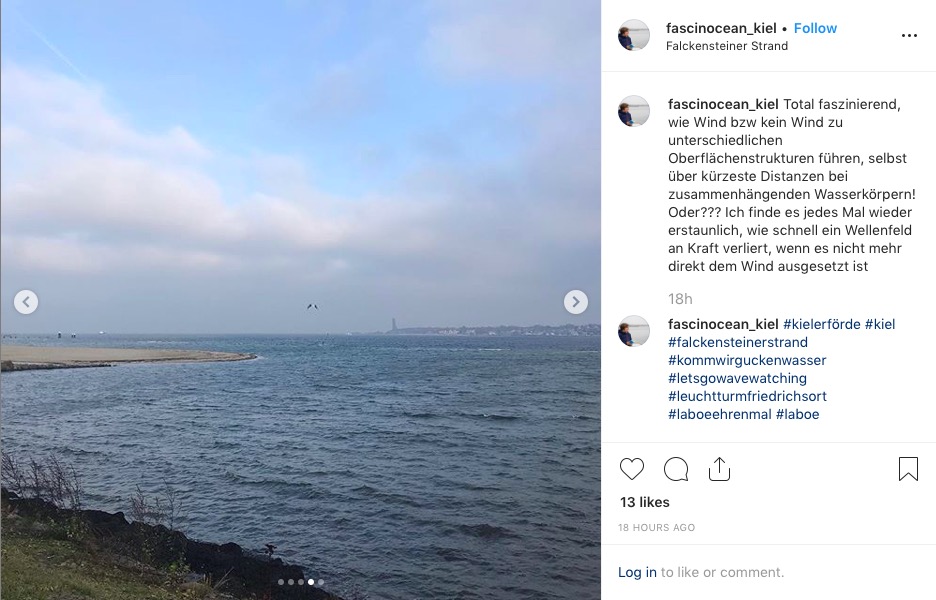
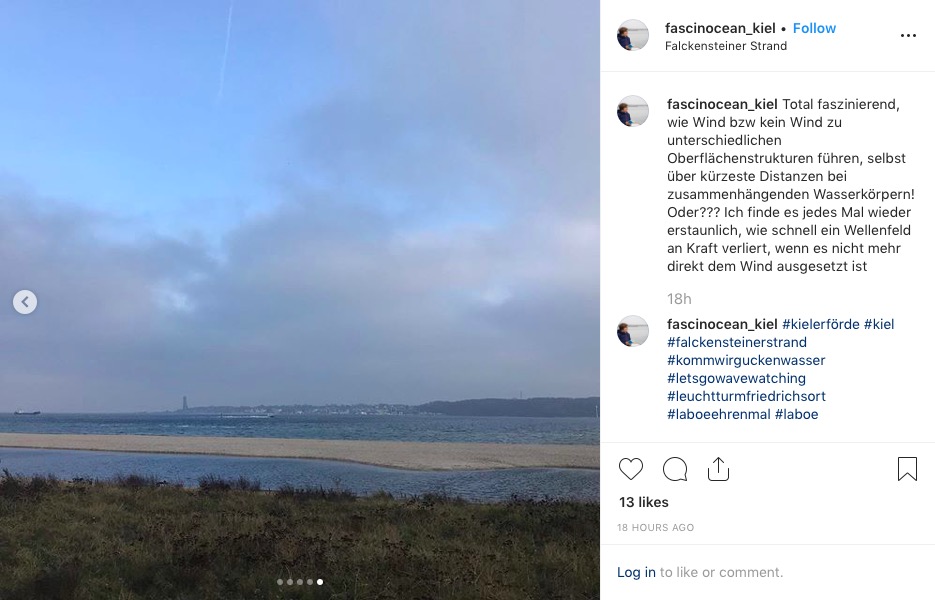
And super cool: The YouTube video that uses my “dead water” experiments went live!
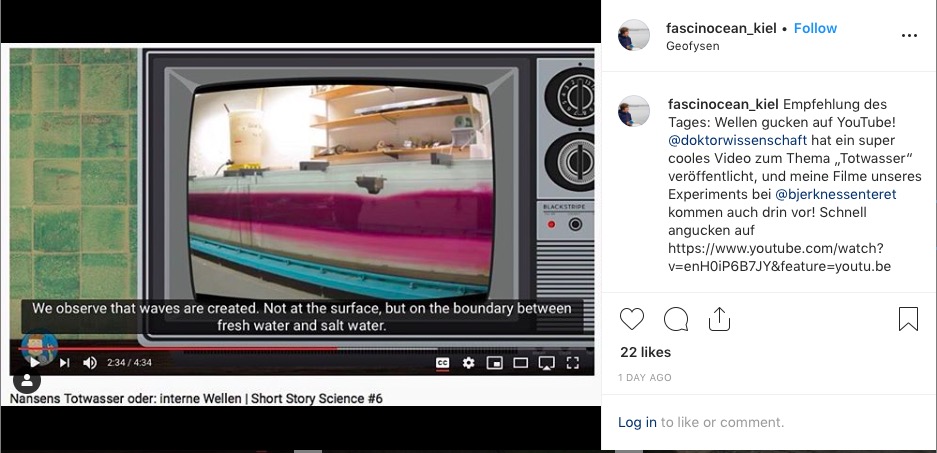
More wave watching
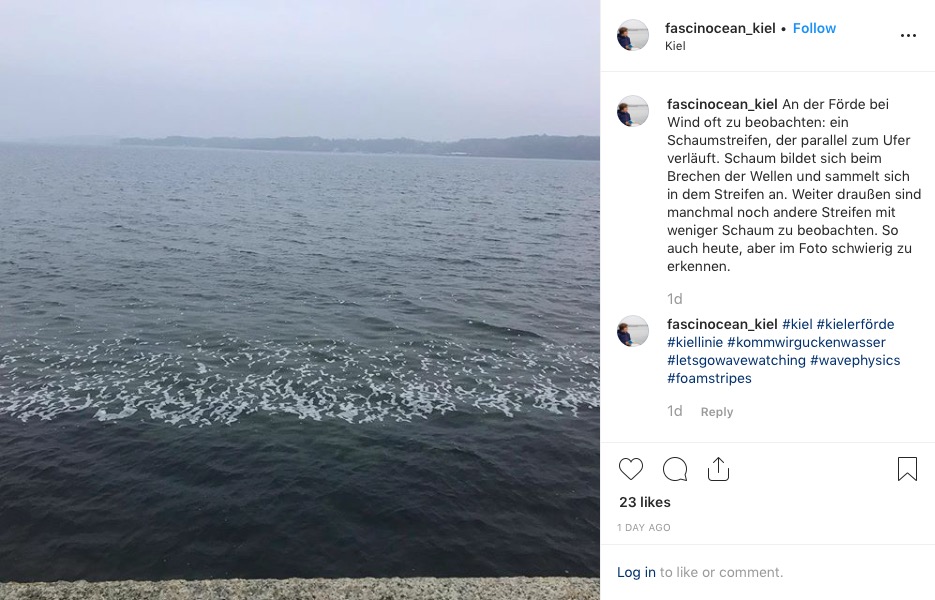
And ships meeting in the dark
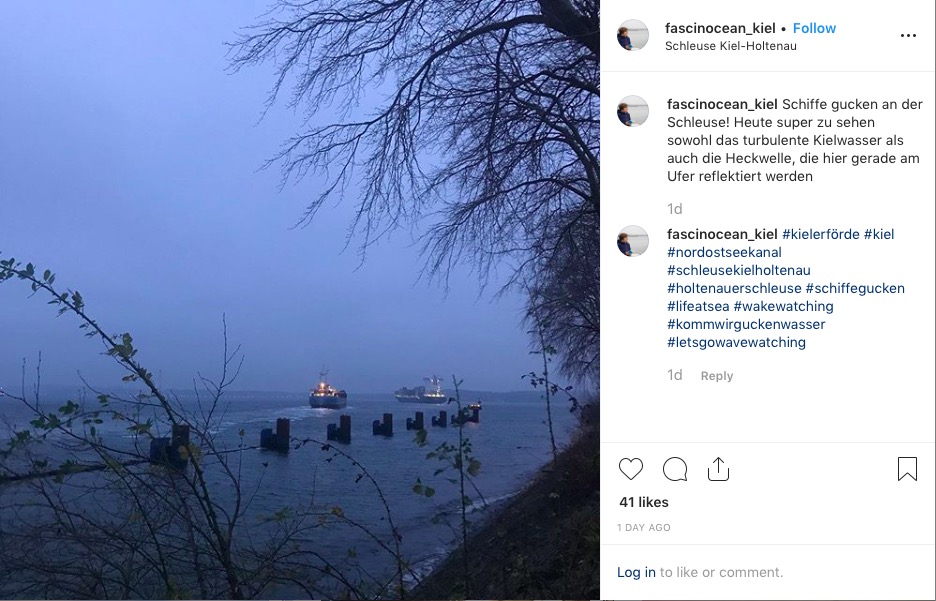
And sitting inside with flowers and a nice fire and watching ships.
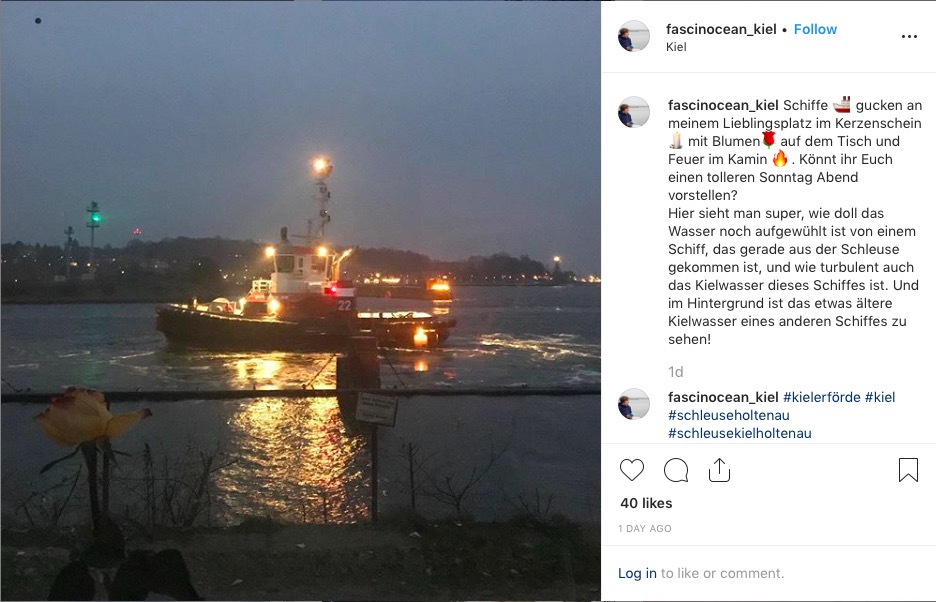
But then November was pretty grey for many days in a row…
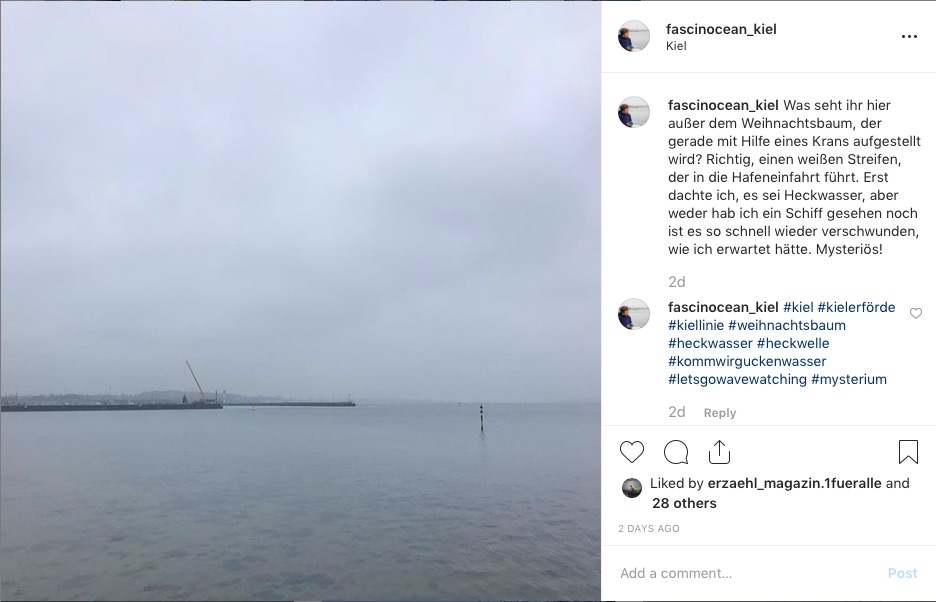
So I worked on my Advent calendar: 24 Days of #KitchenOceanography!
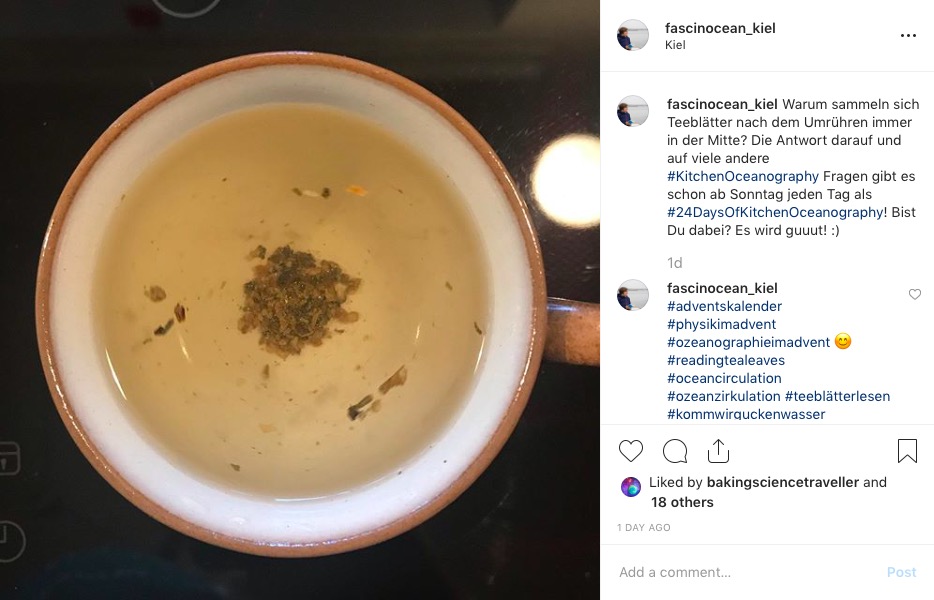
And went more wave watching.
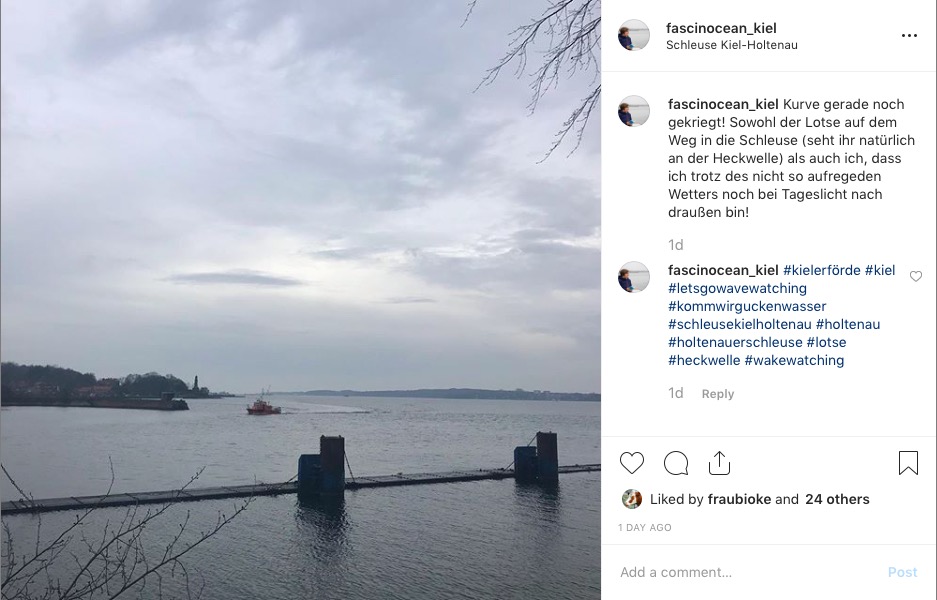
And went to play at GEOMAR with Torge and Rolf Käse!
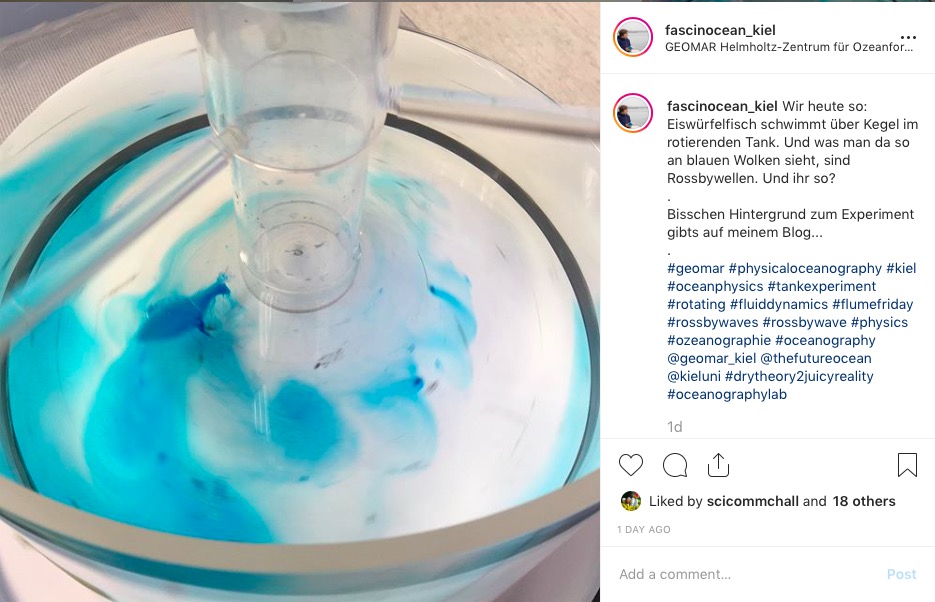
This is a team picture of a successful Friday evening.
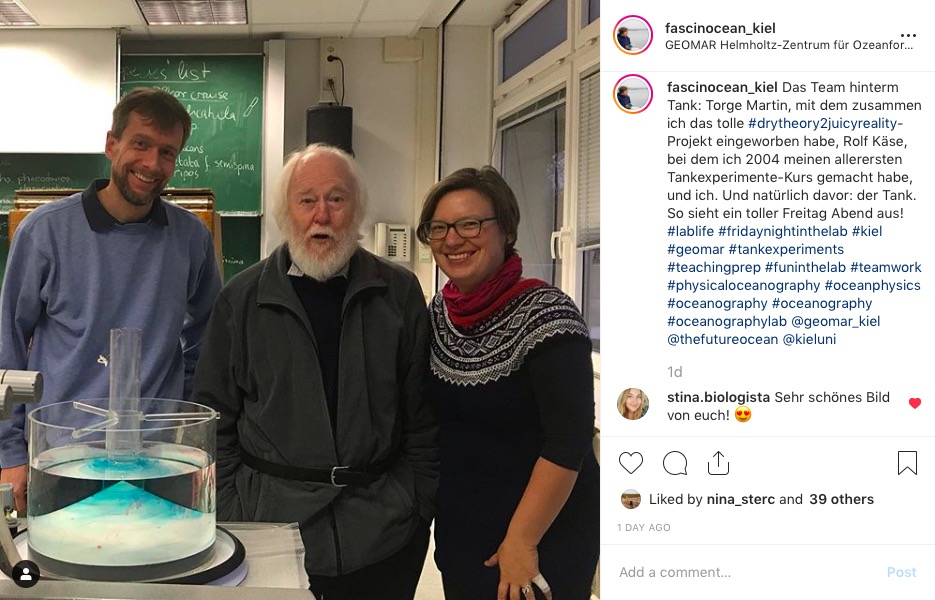
More experiments!
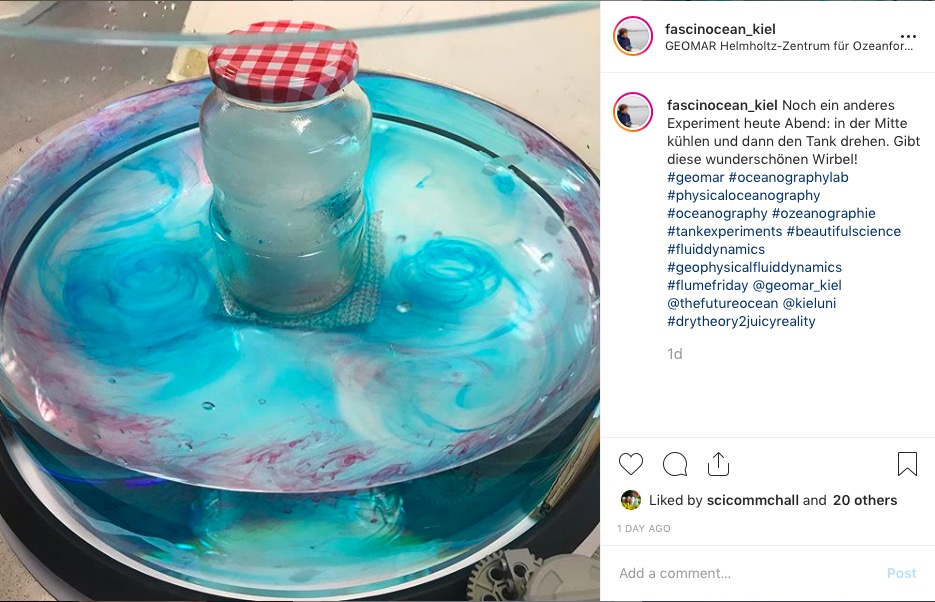
And then it got cold: Frost on leaves on the pier!
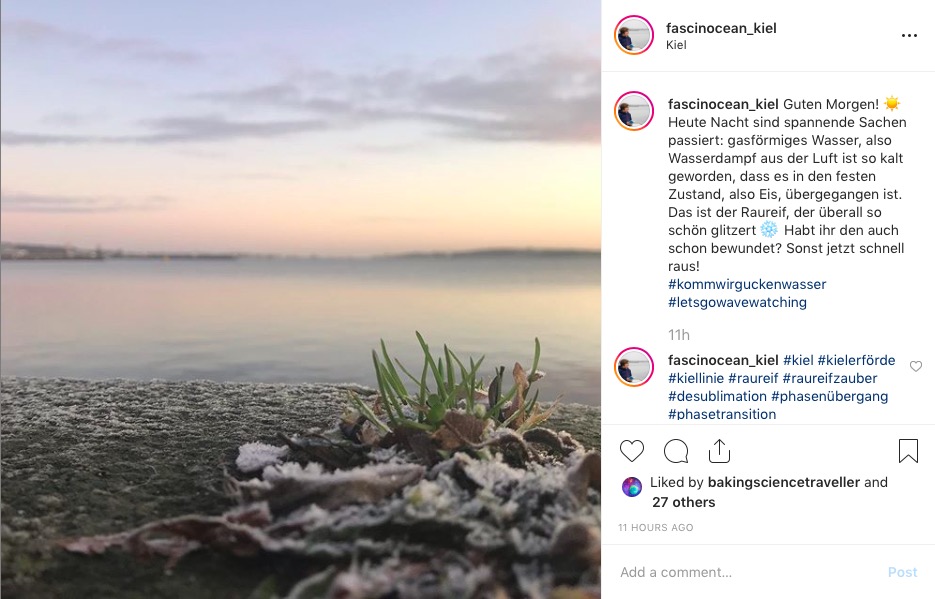
And a beautiful sunrise.
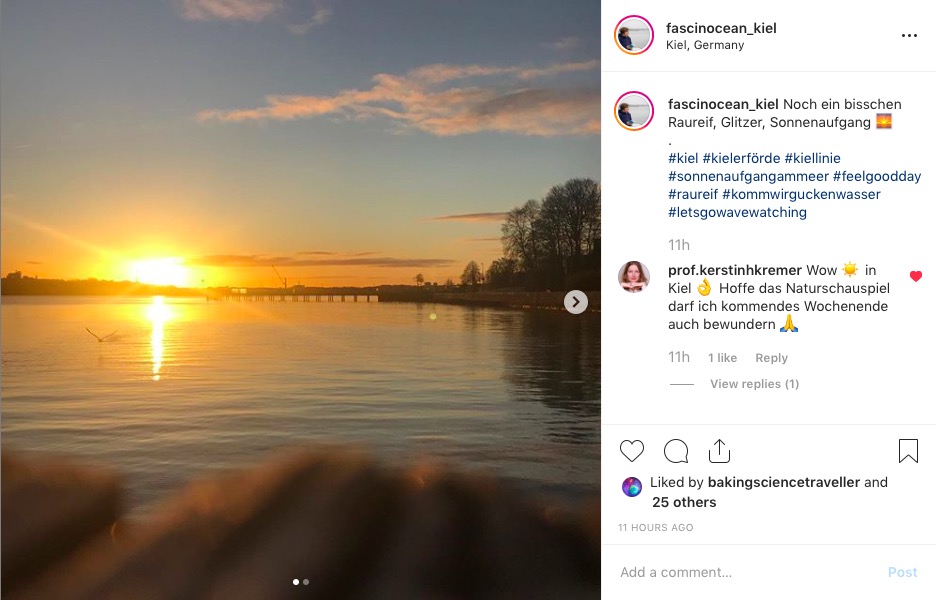
Now sunrise with frost in the foreground.
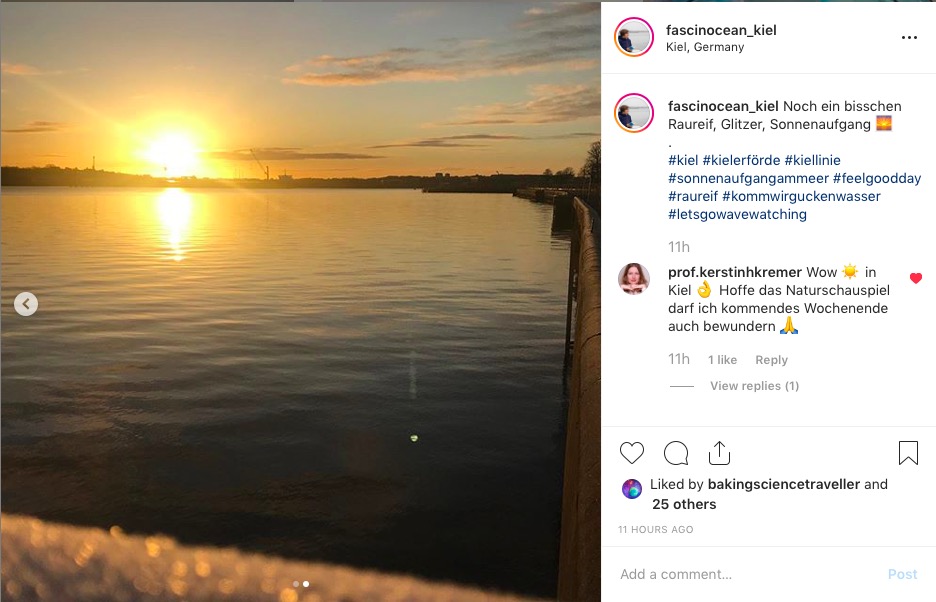
And the third picture that I needed in that row so I could start with the Advent calendar afterwards :-D
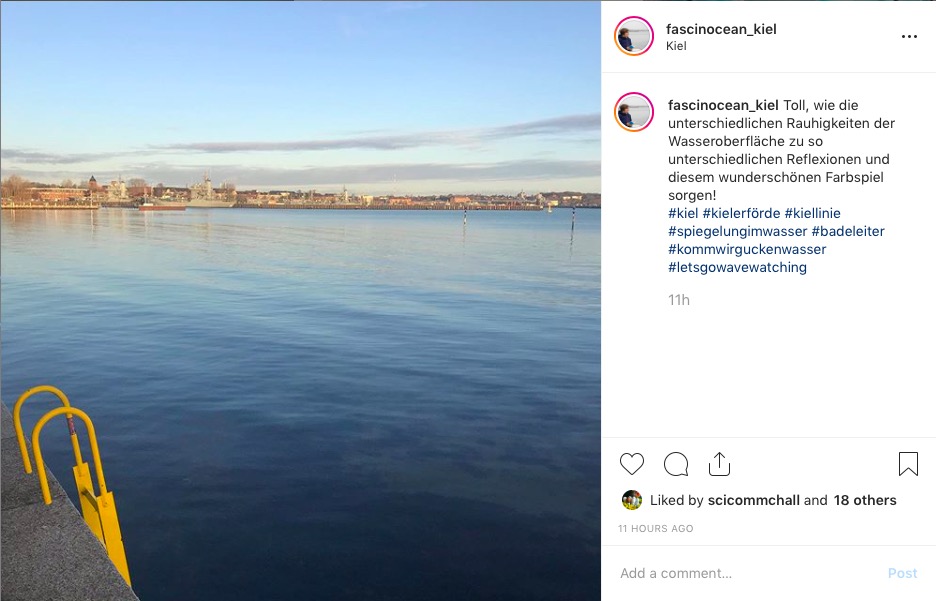
And this is the blog post advertising 24 Days of #KitchenOceanography
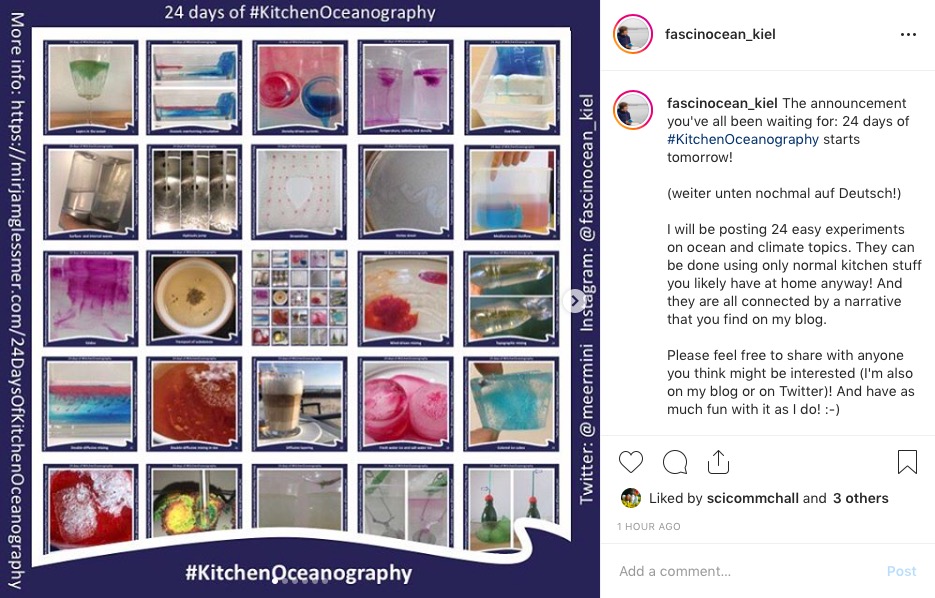
Documenting the little walk I took to stay sane while trying to finish up the Advent calendar…
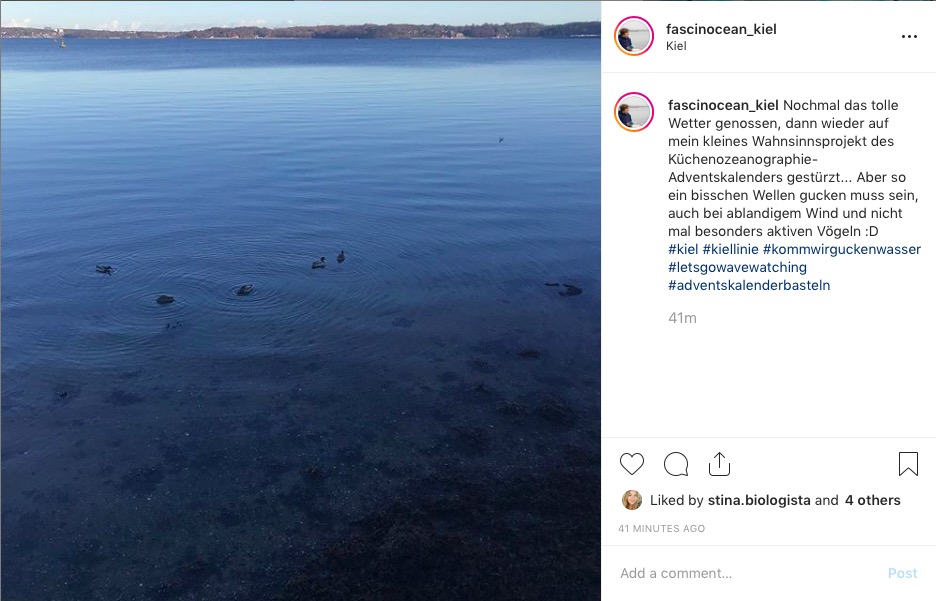
And here we go, that was my November on Instagram! I am quite impressed with the sheer volume of pictures I have posted, and that I managed to write semi-useful captions to most (on Instagram, that is, not in this blog post ;-))
